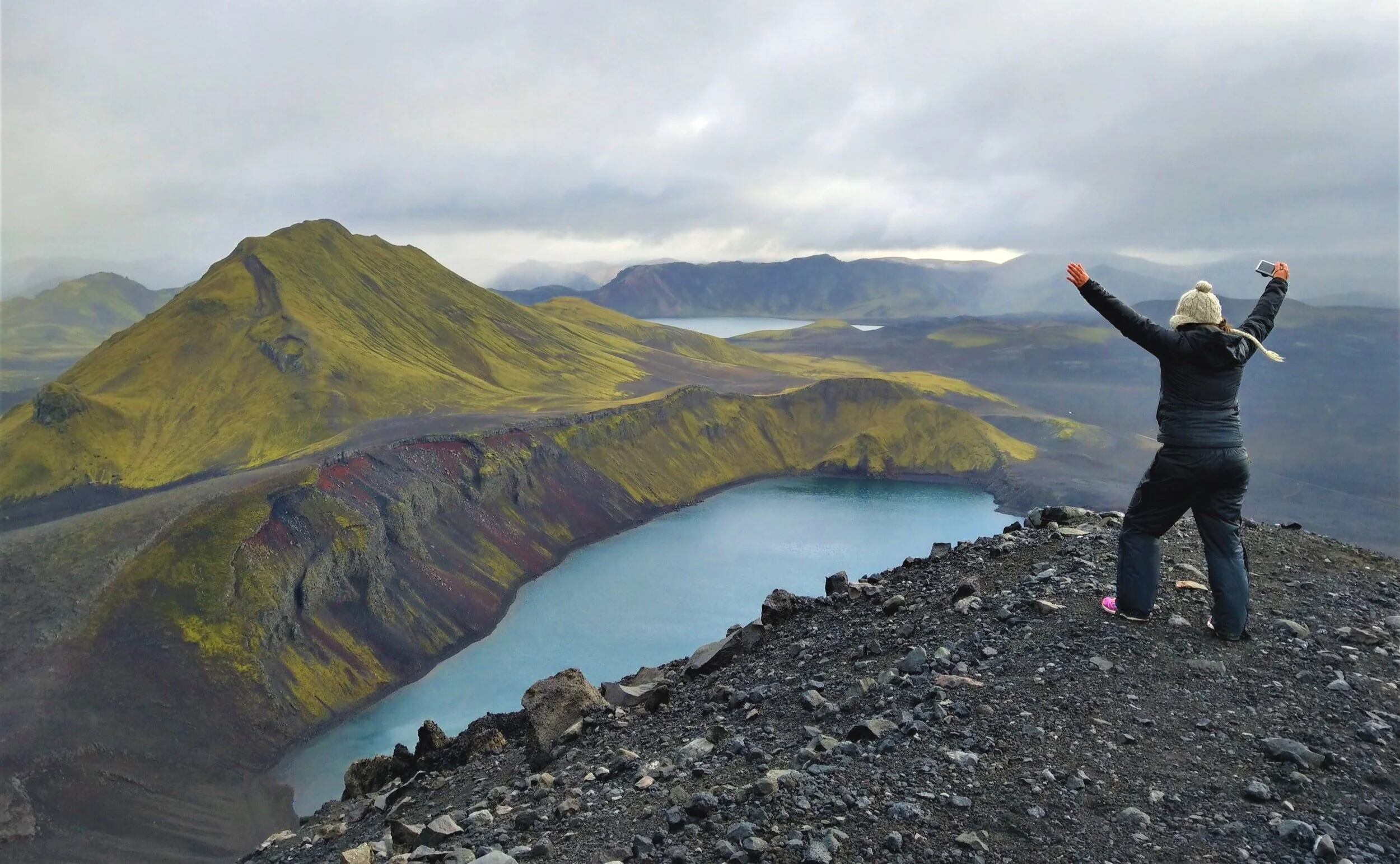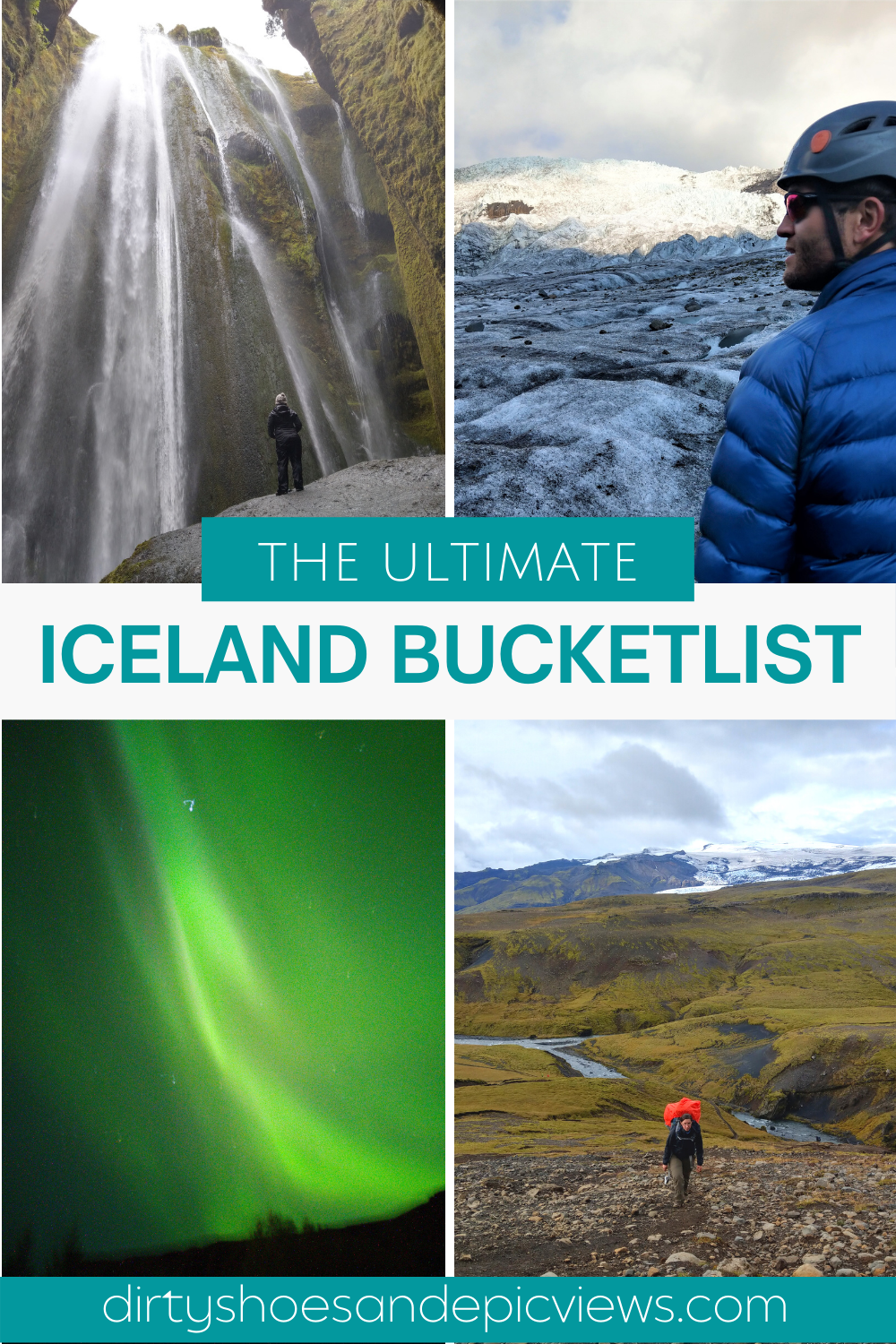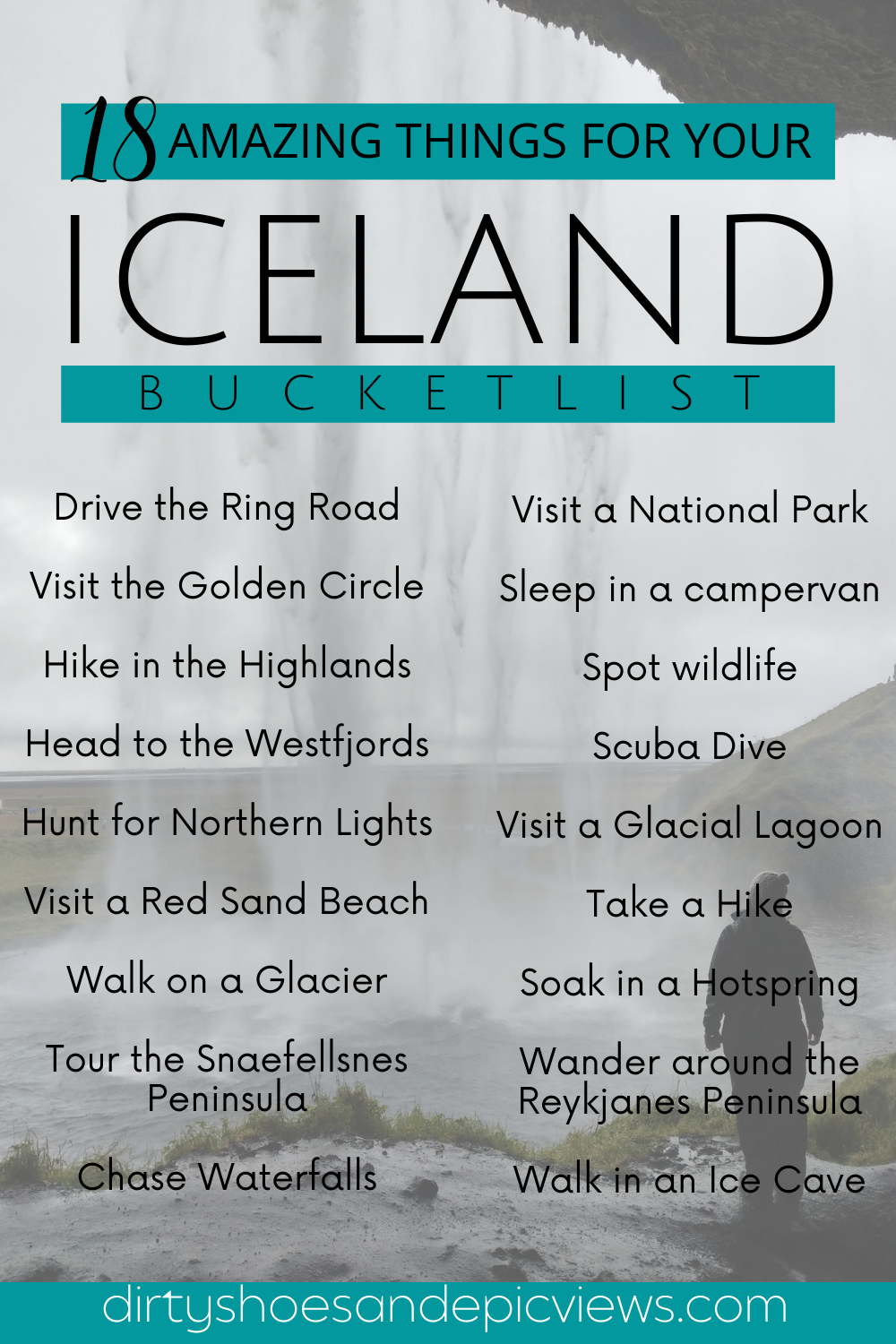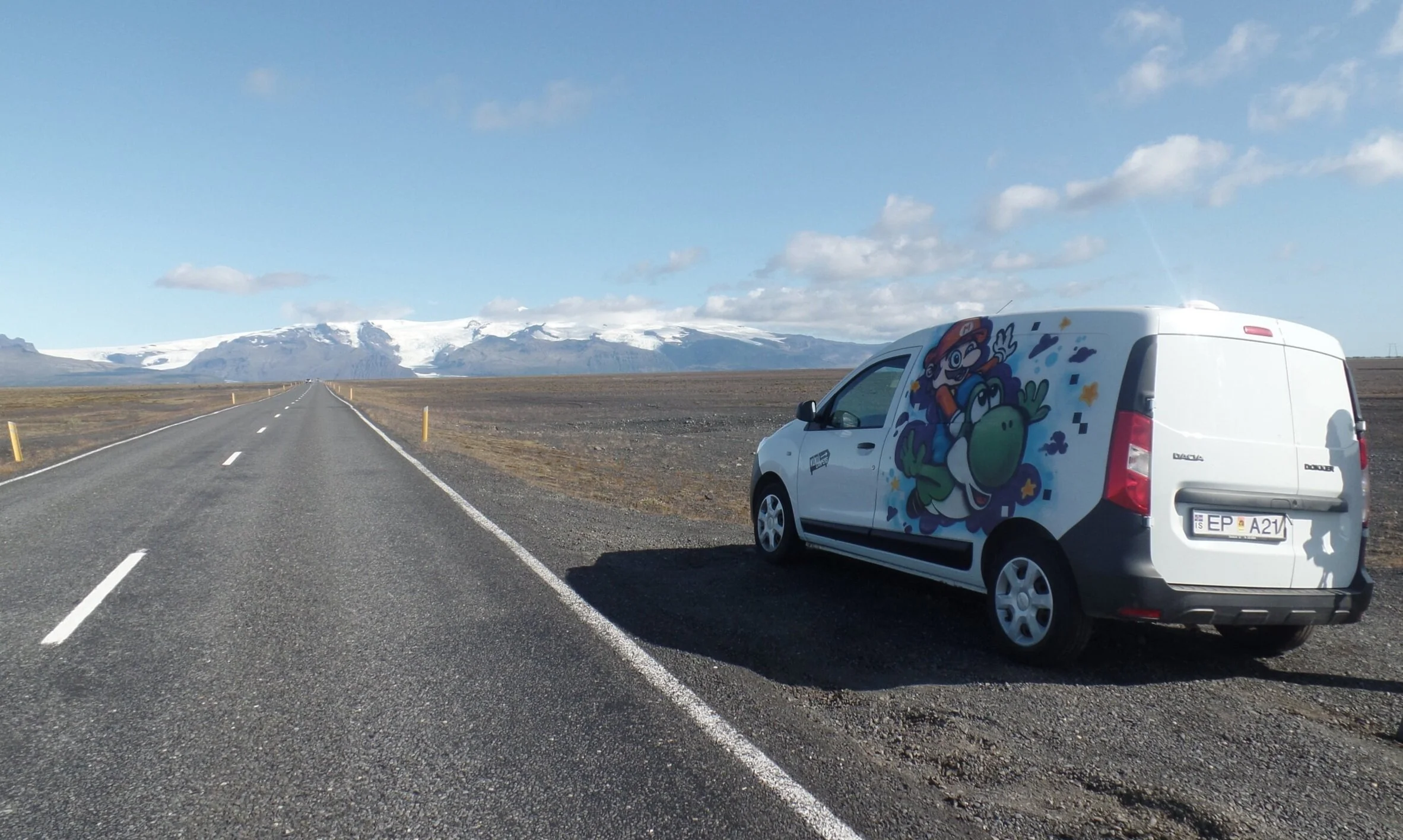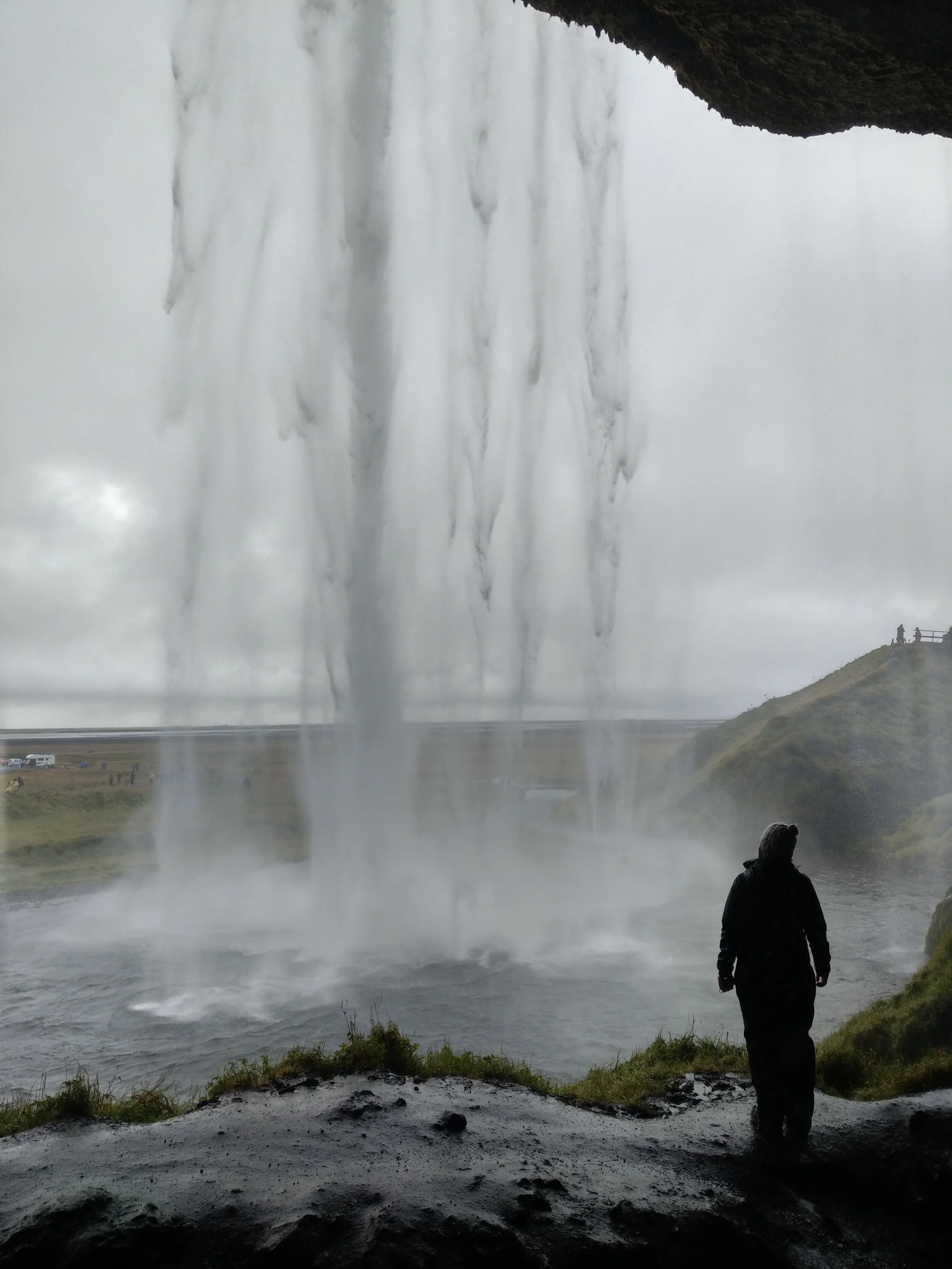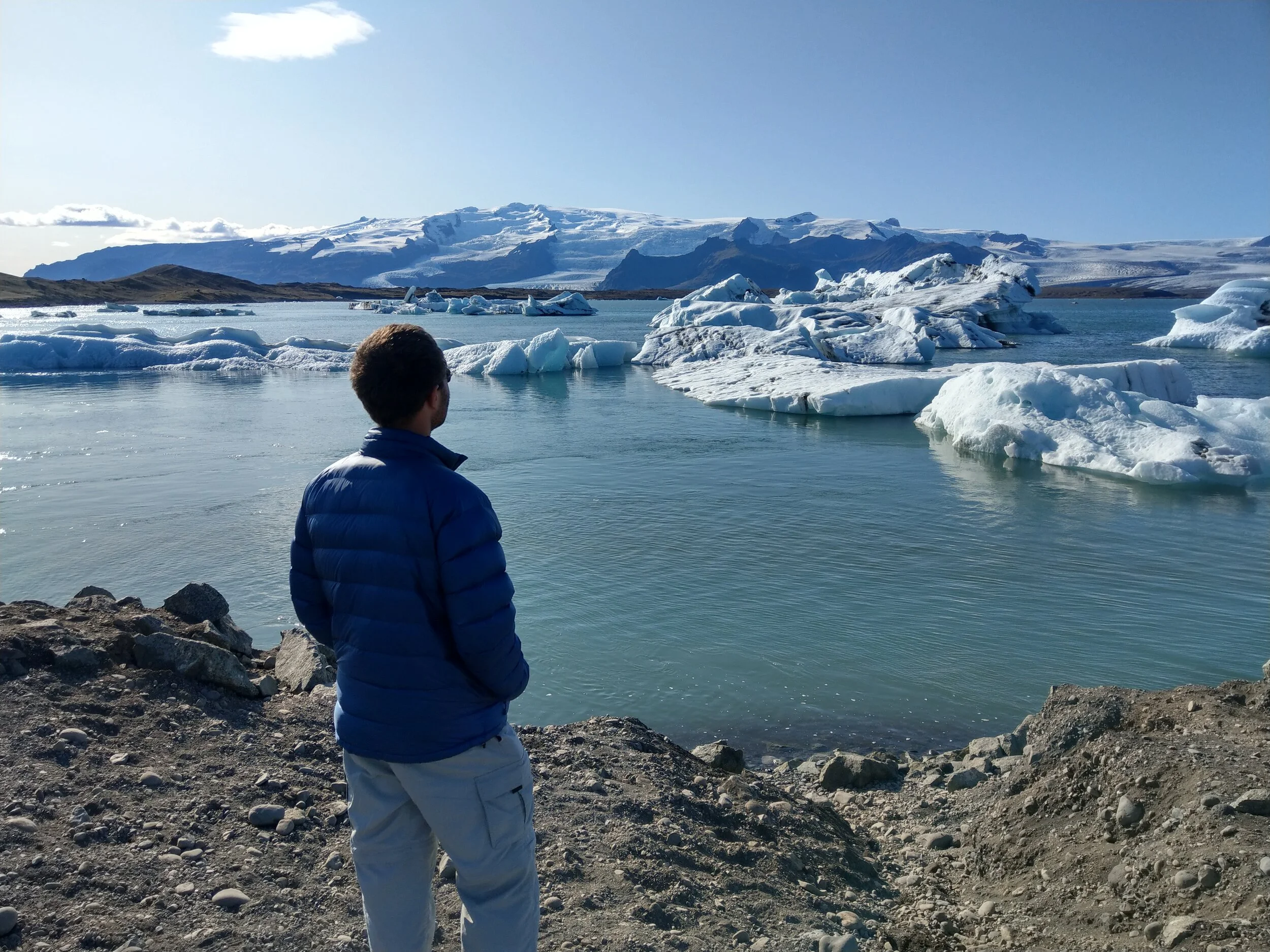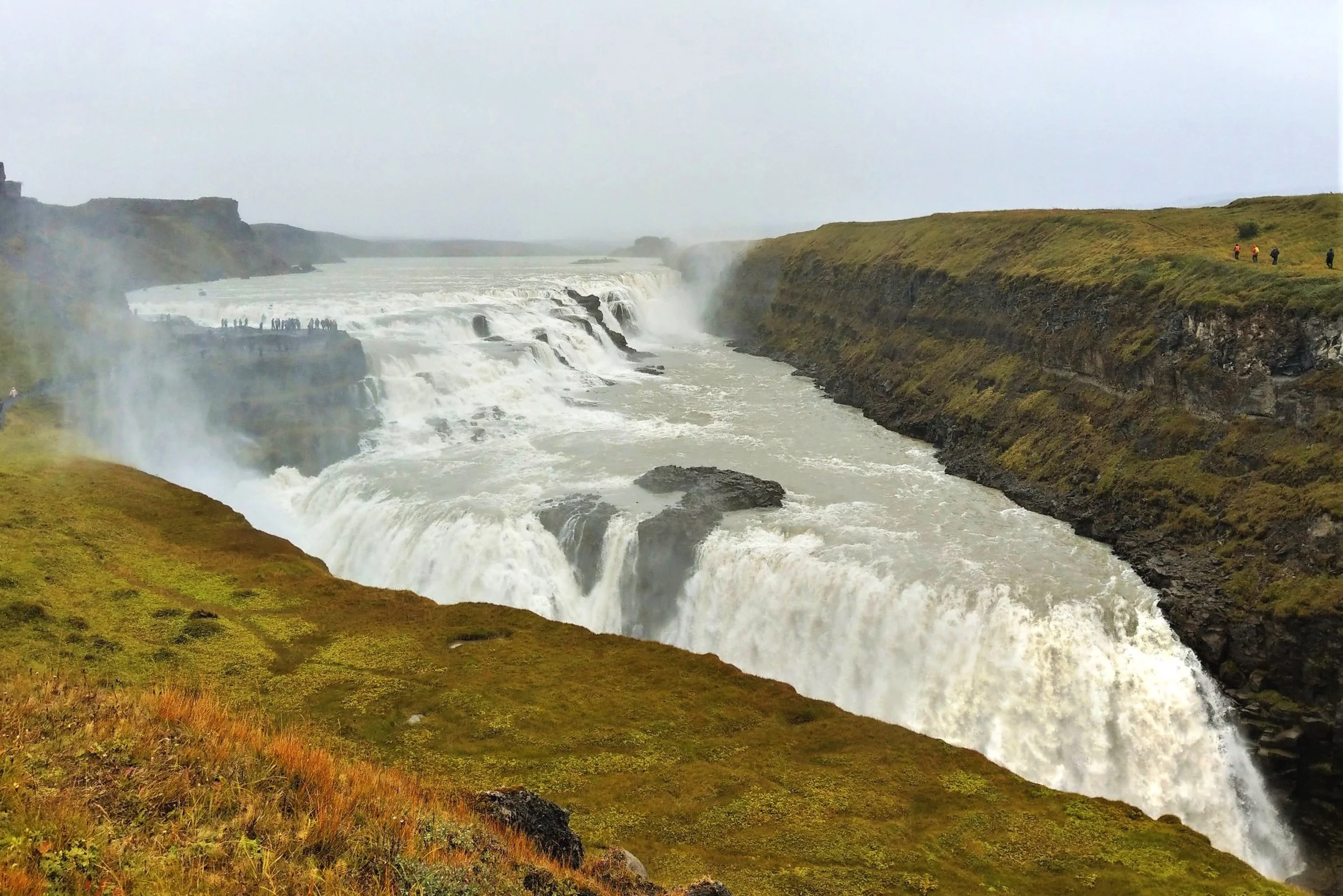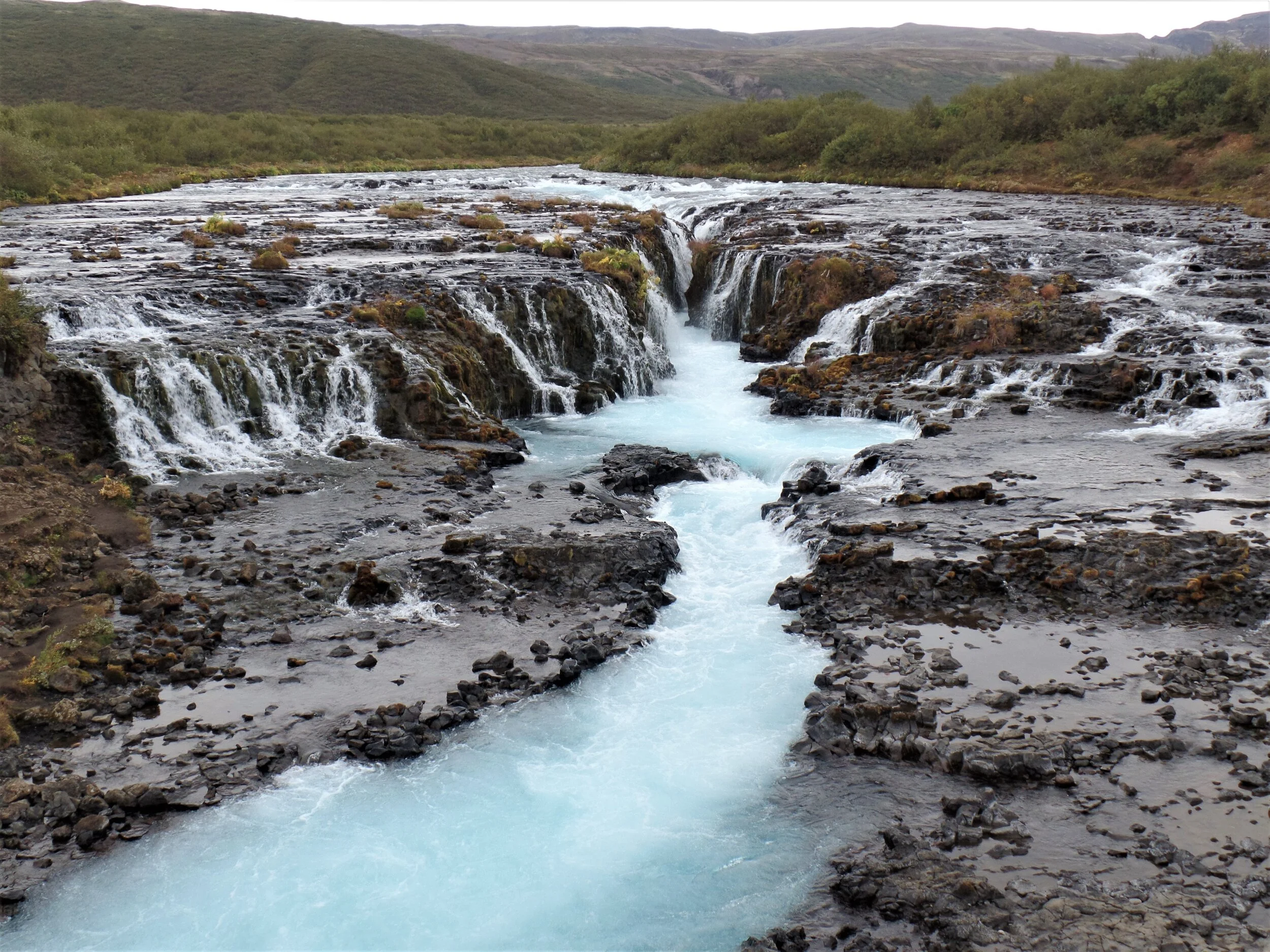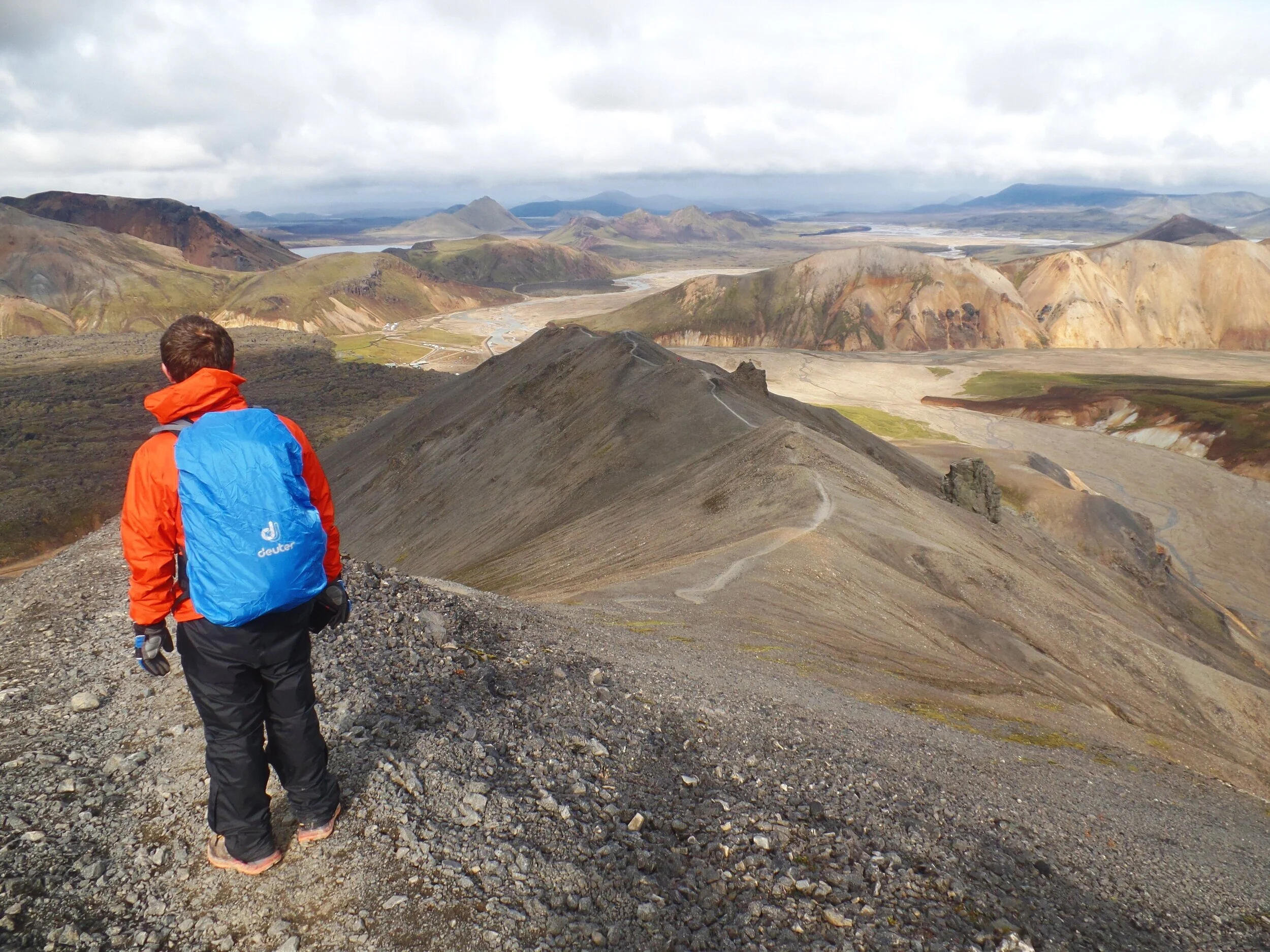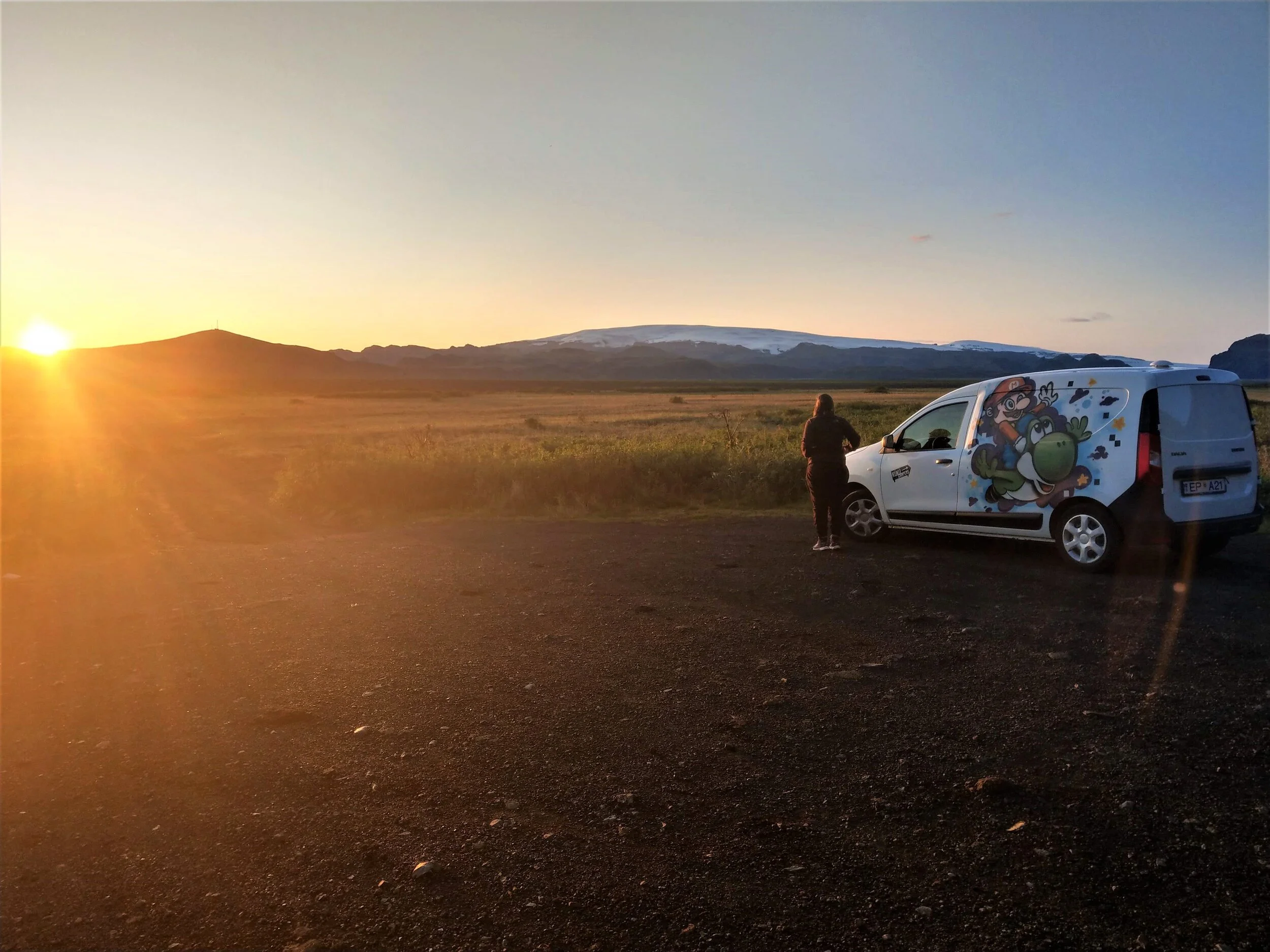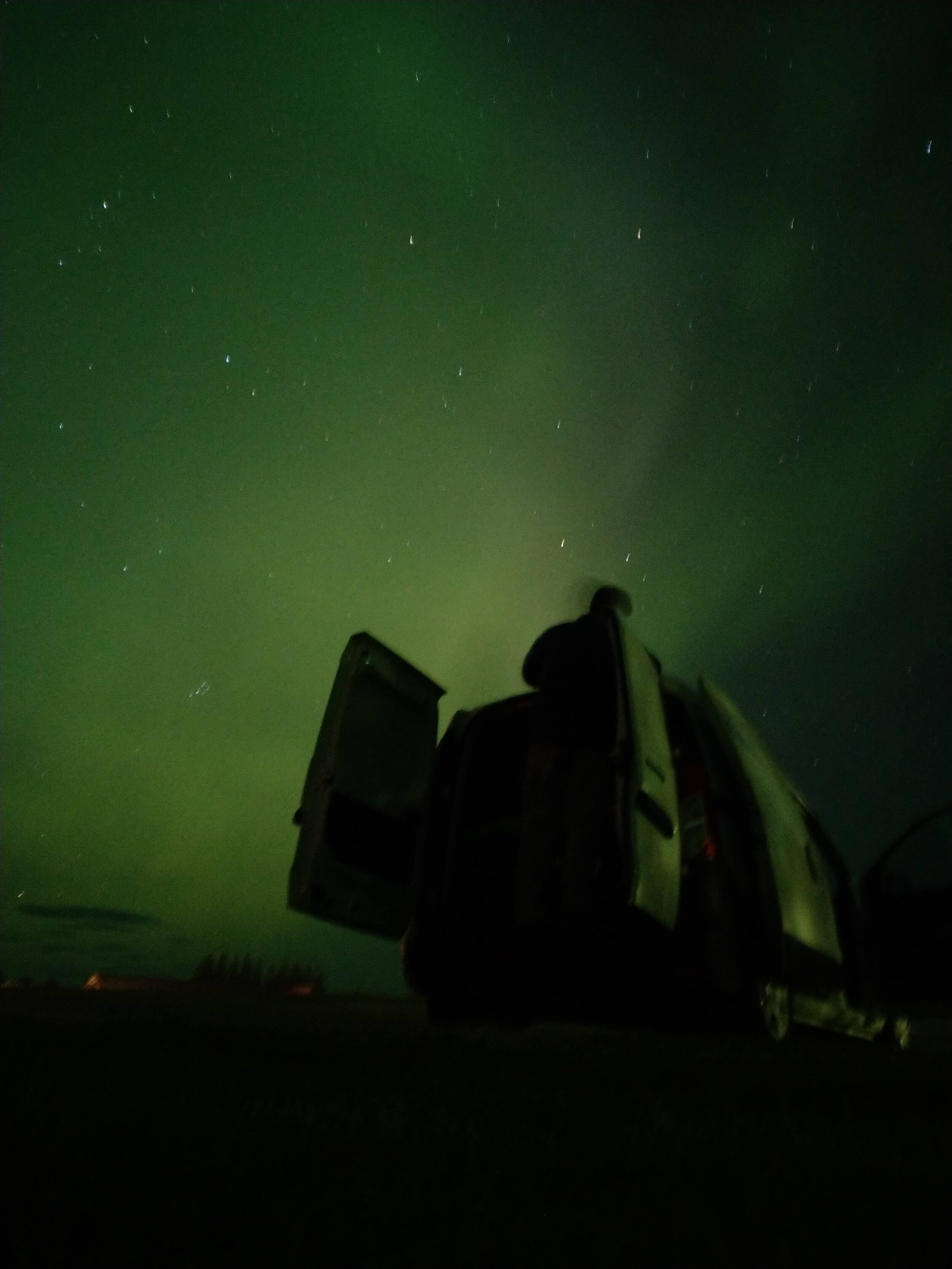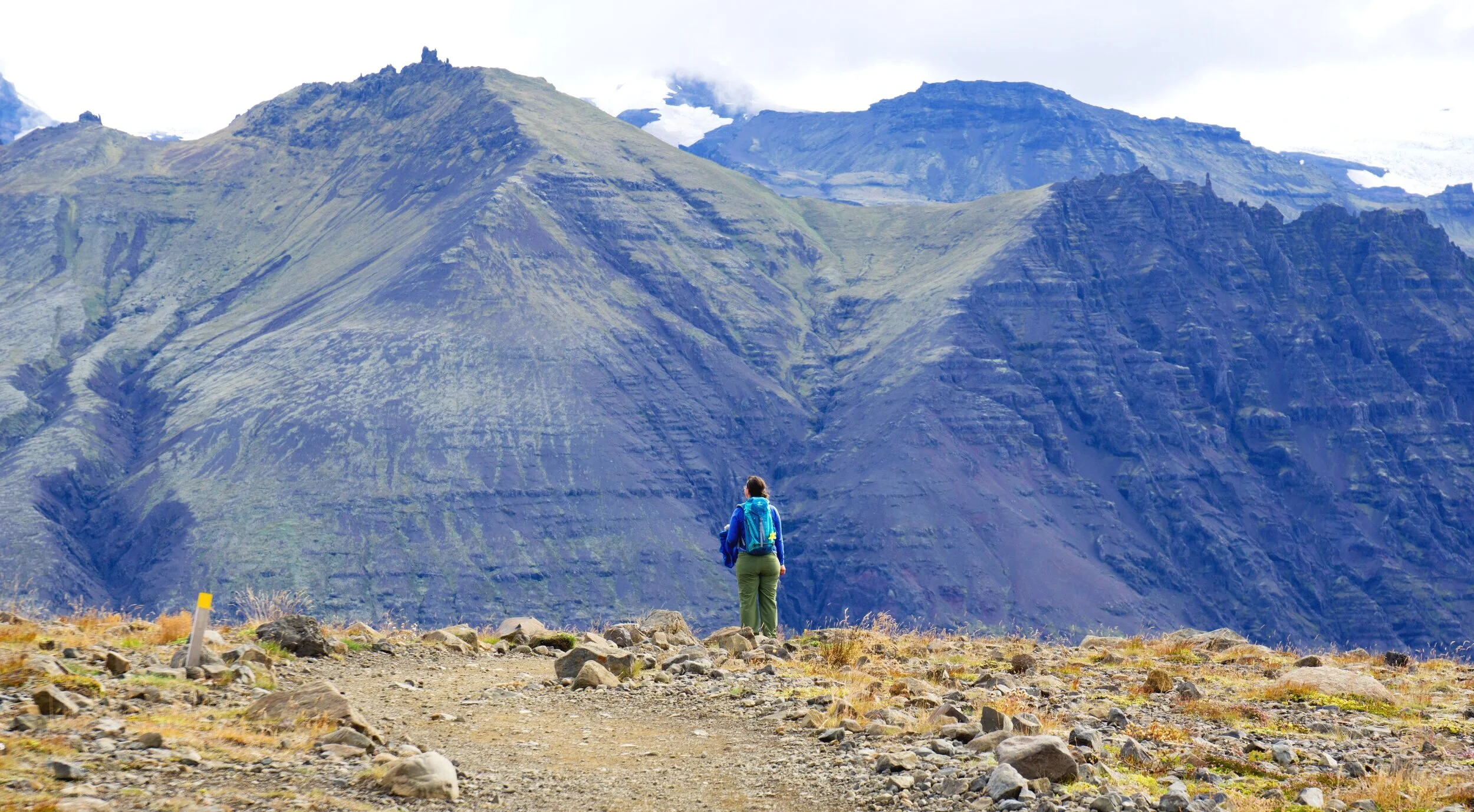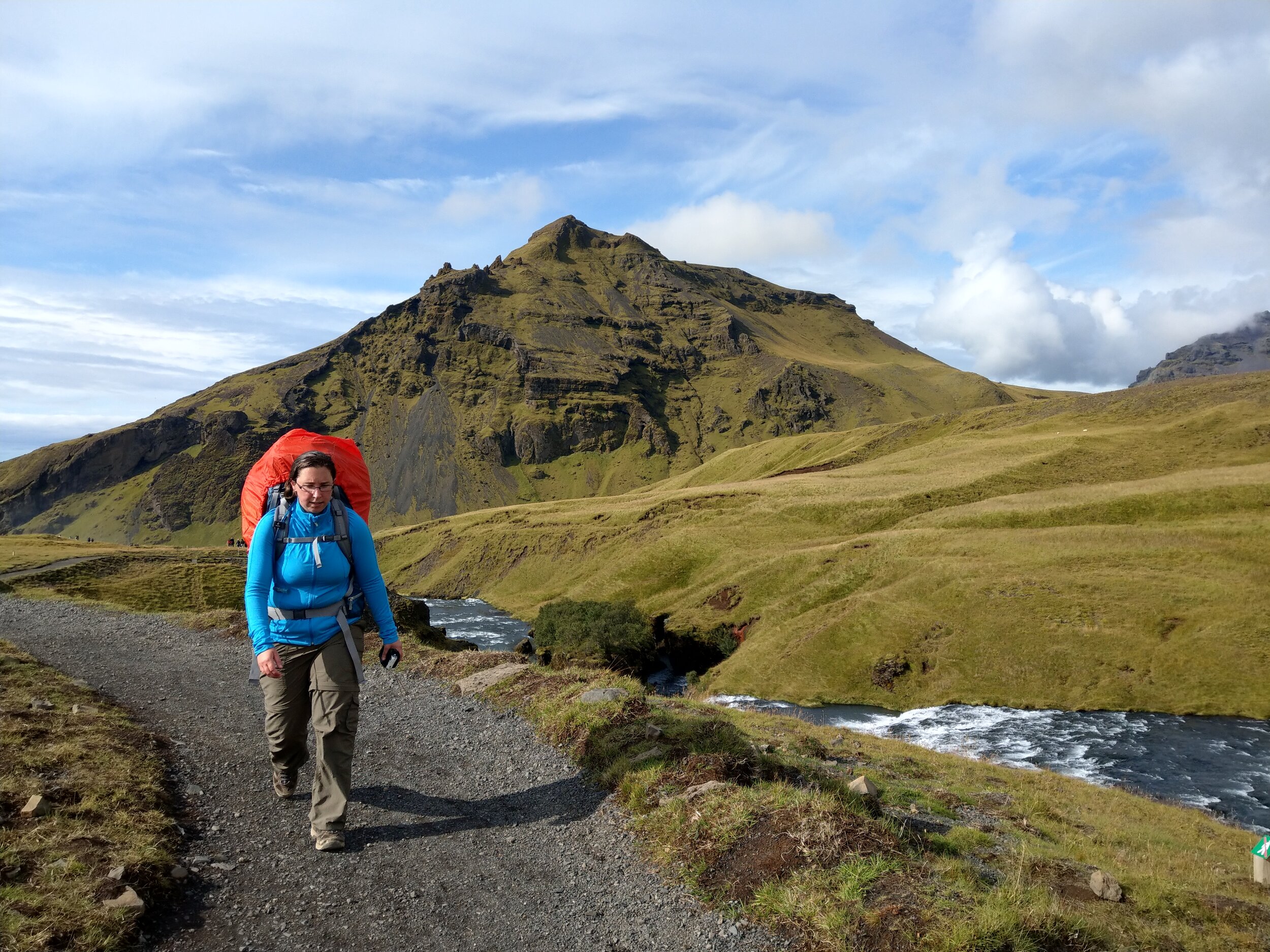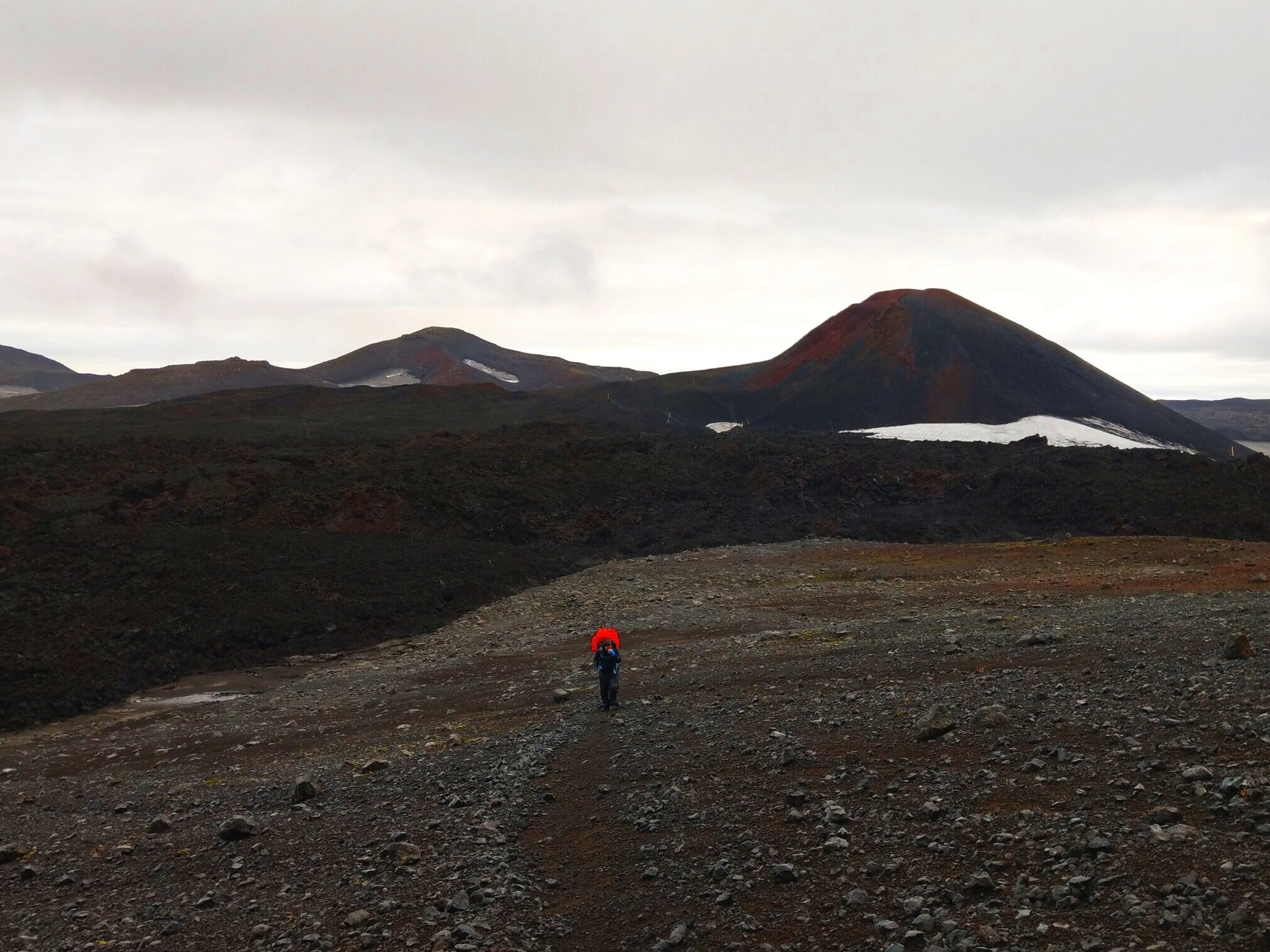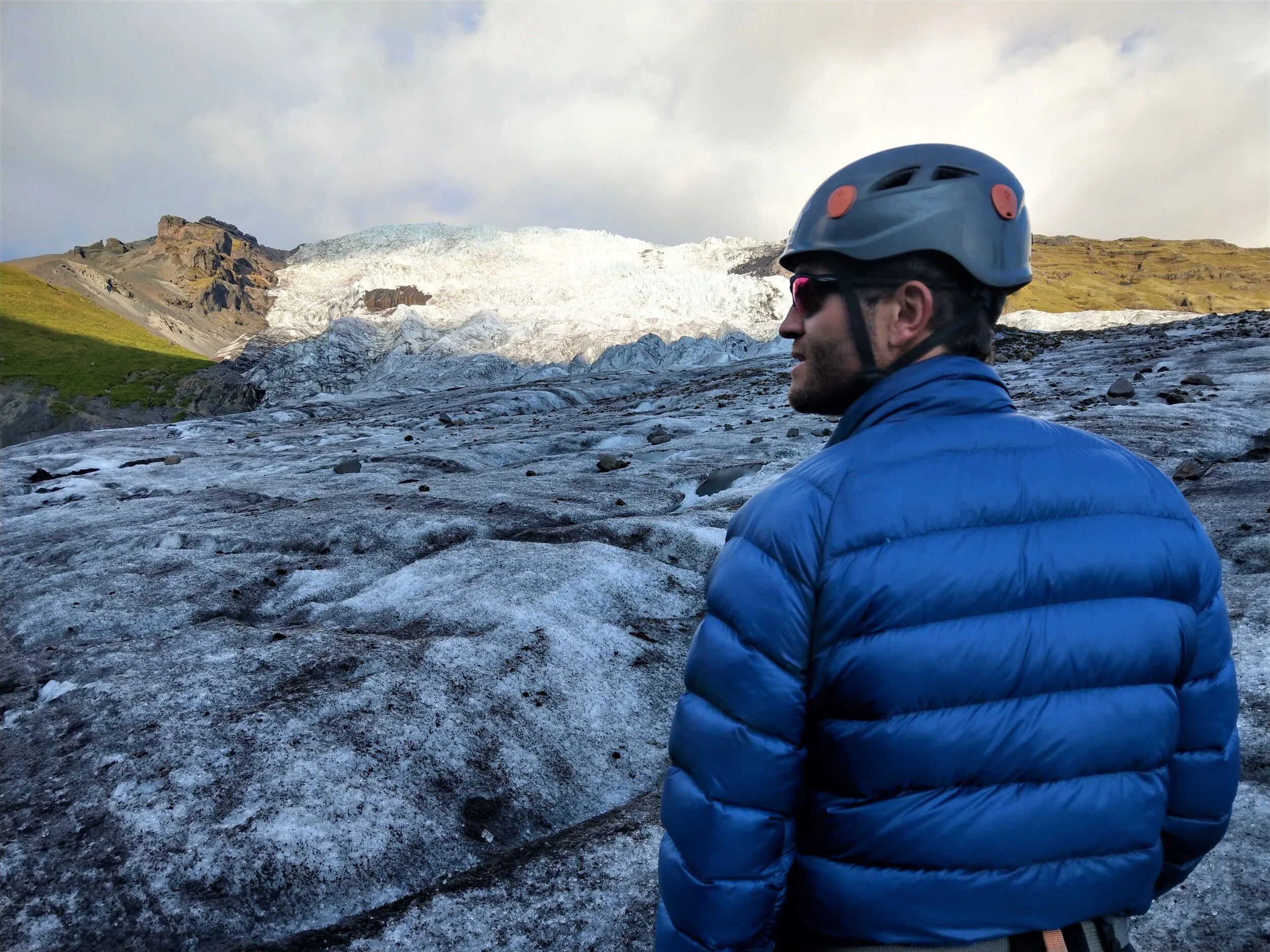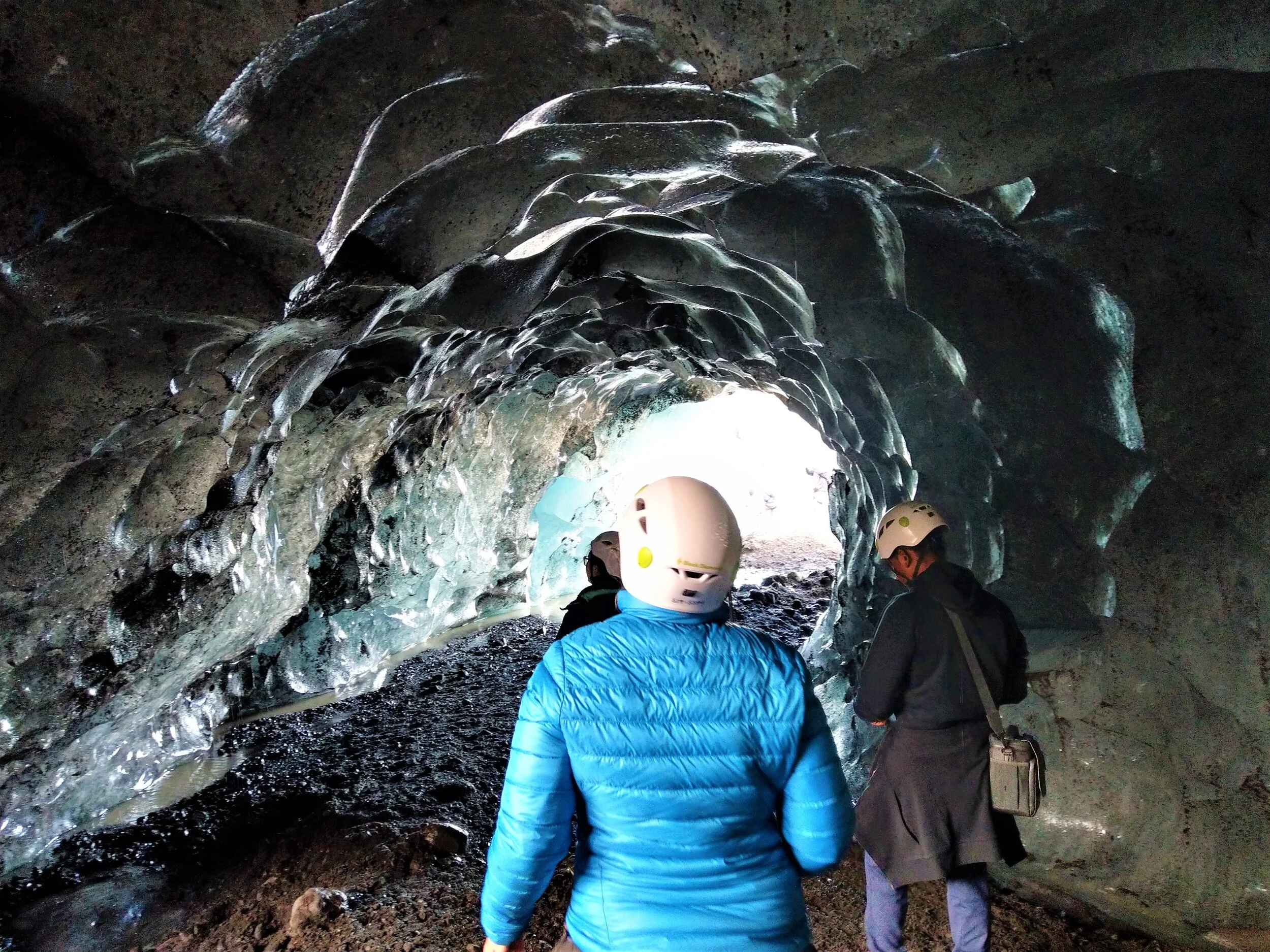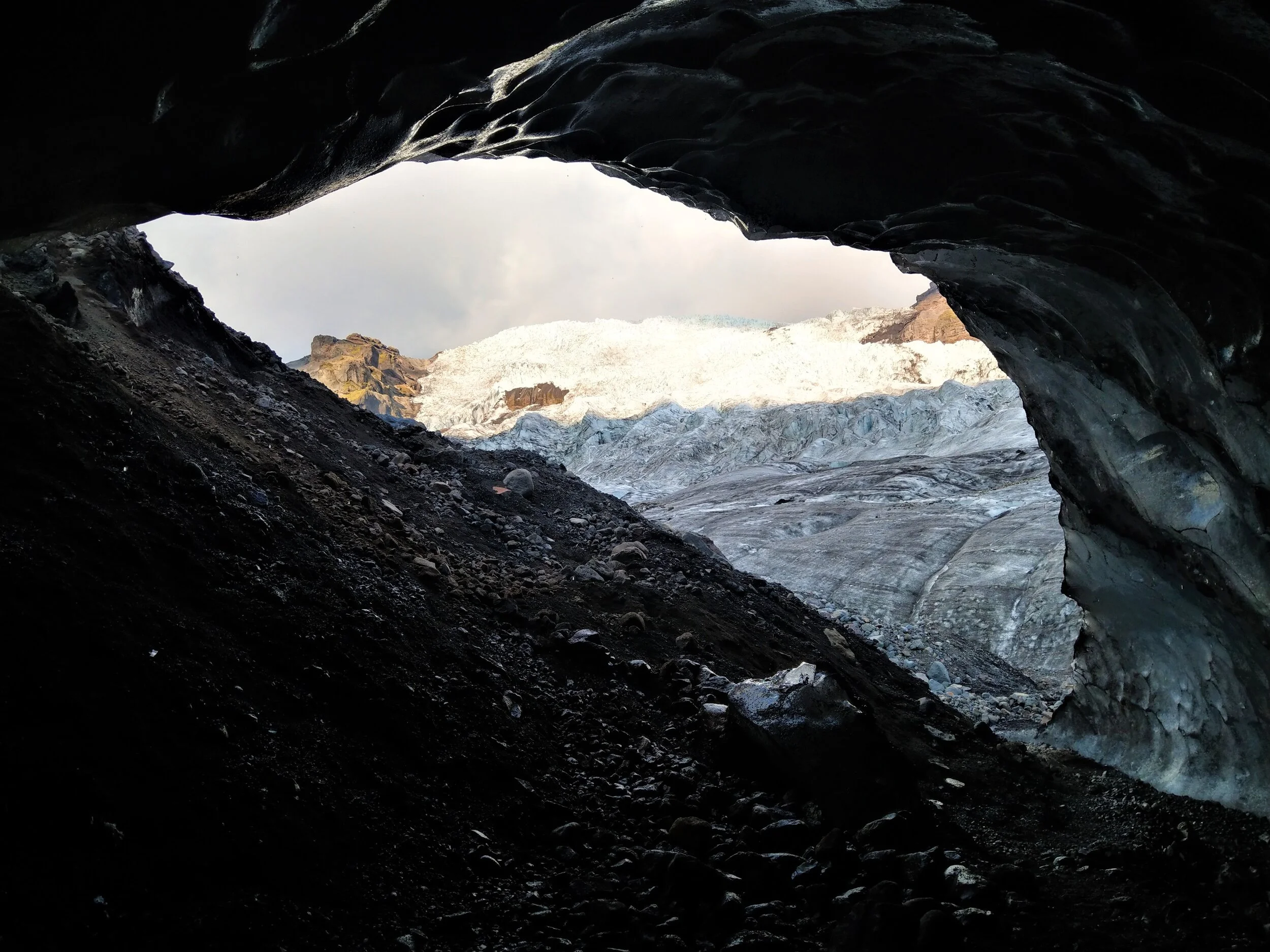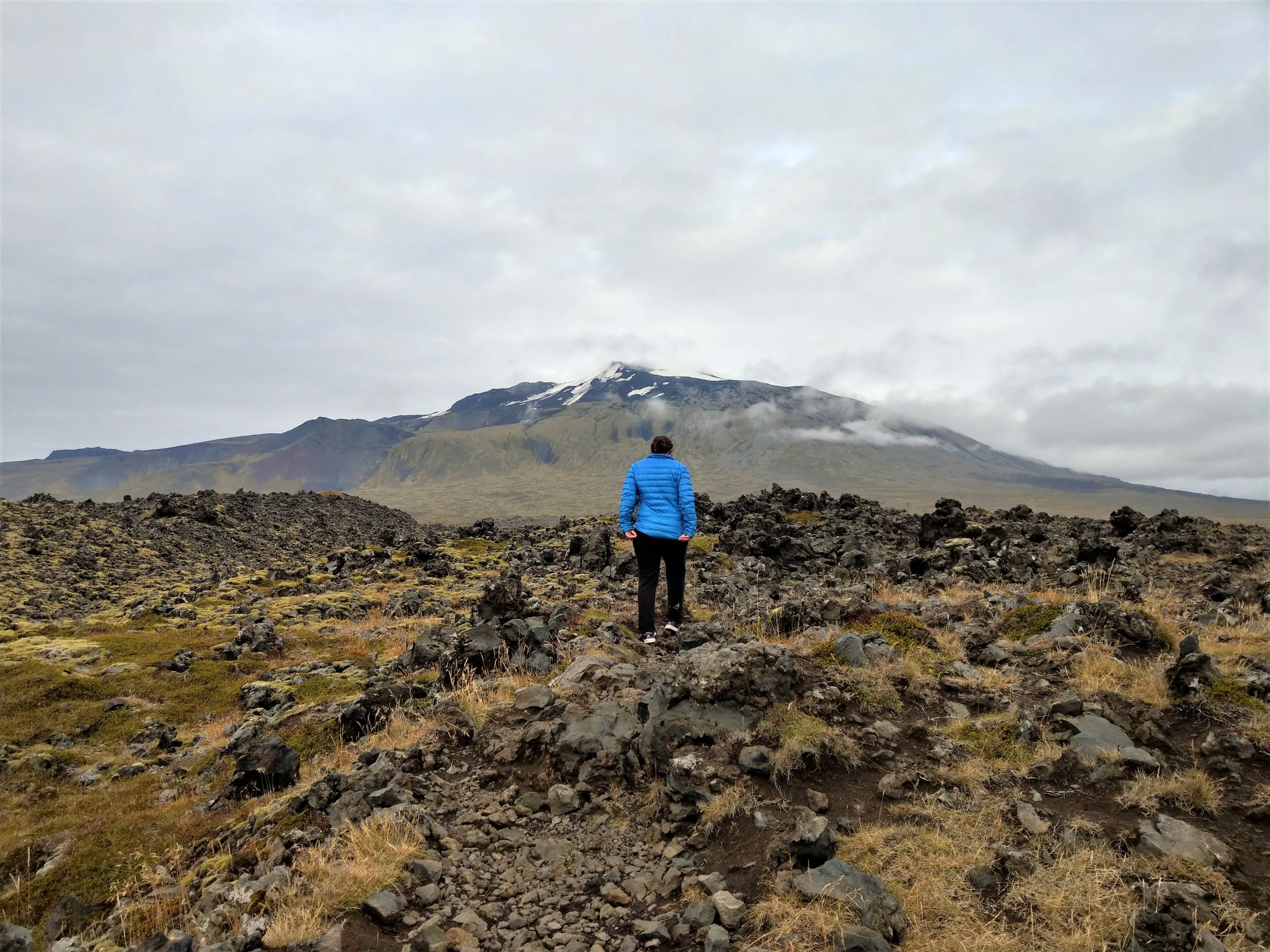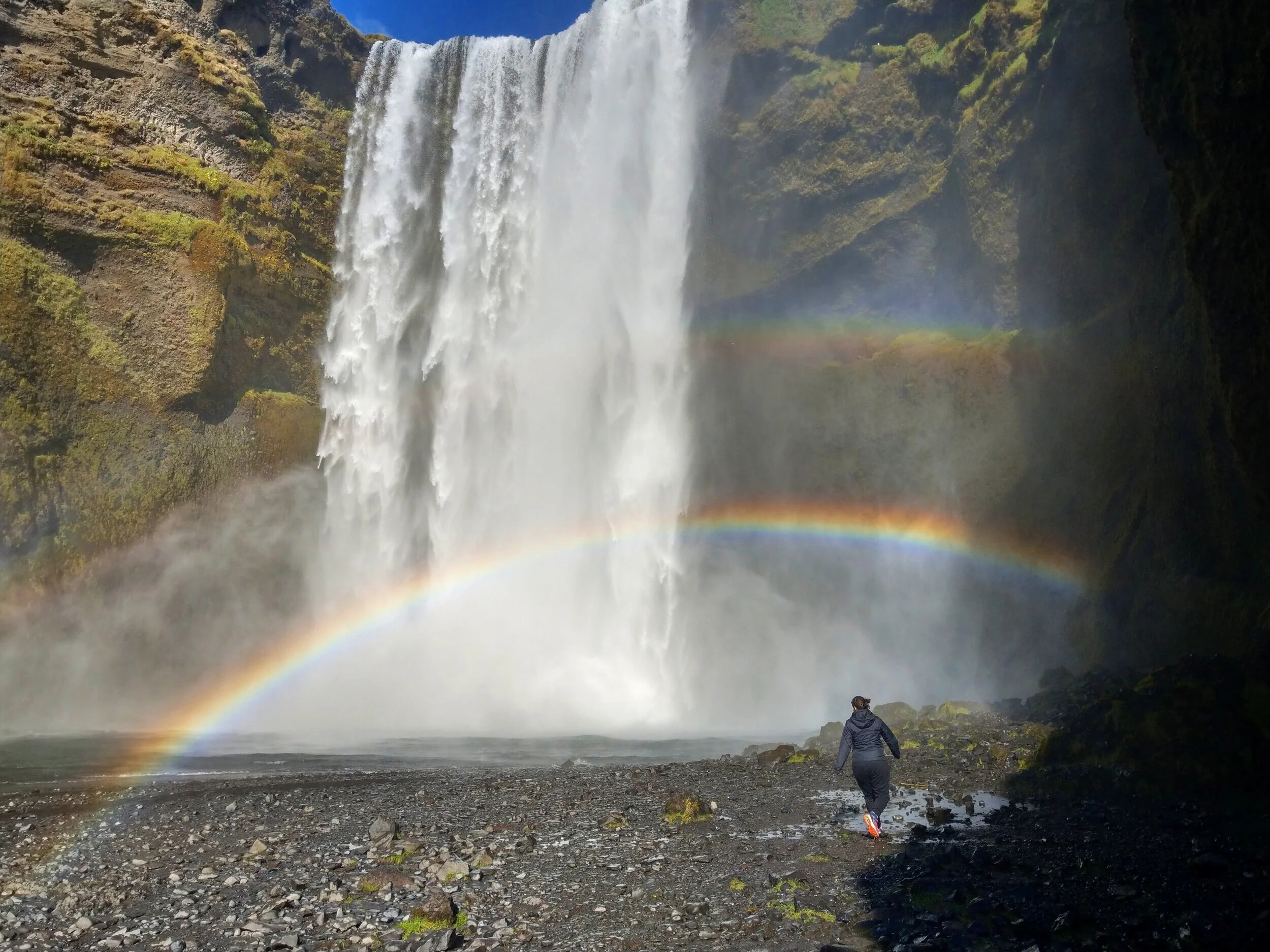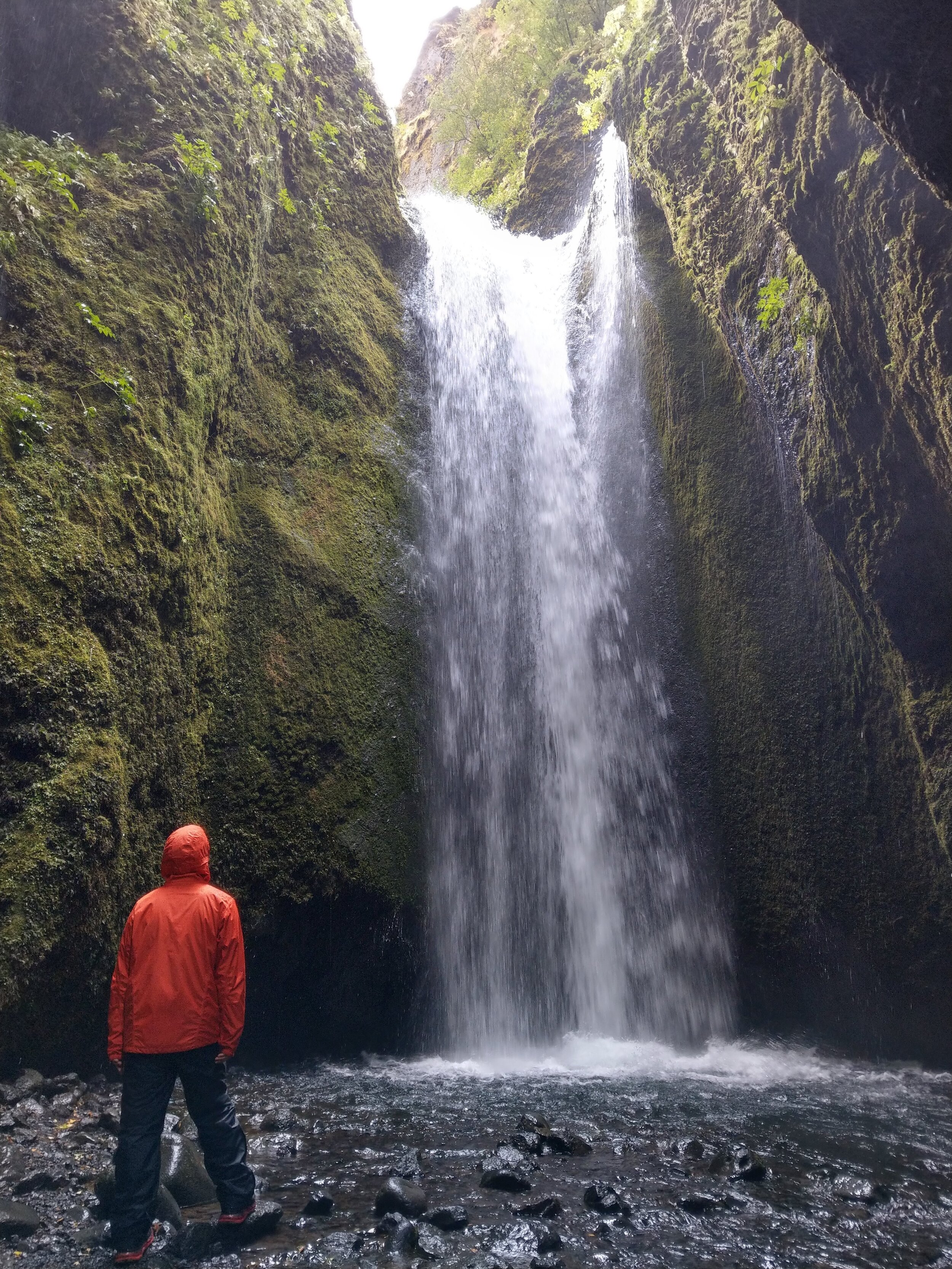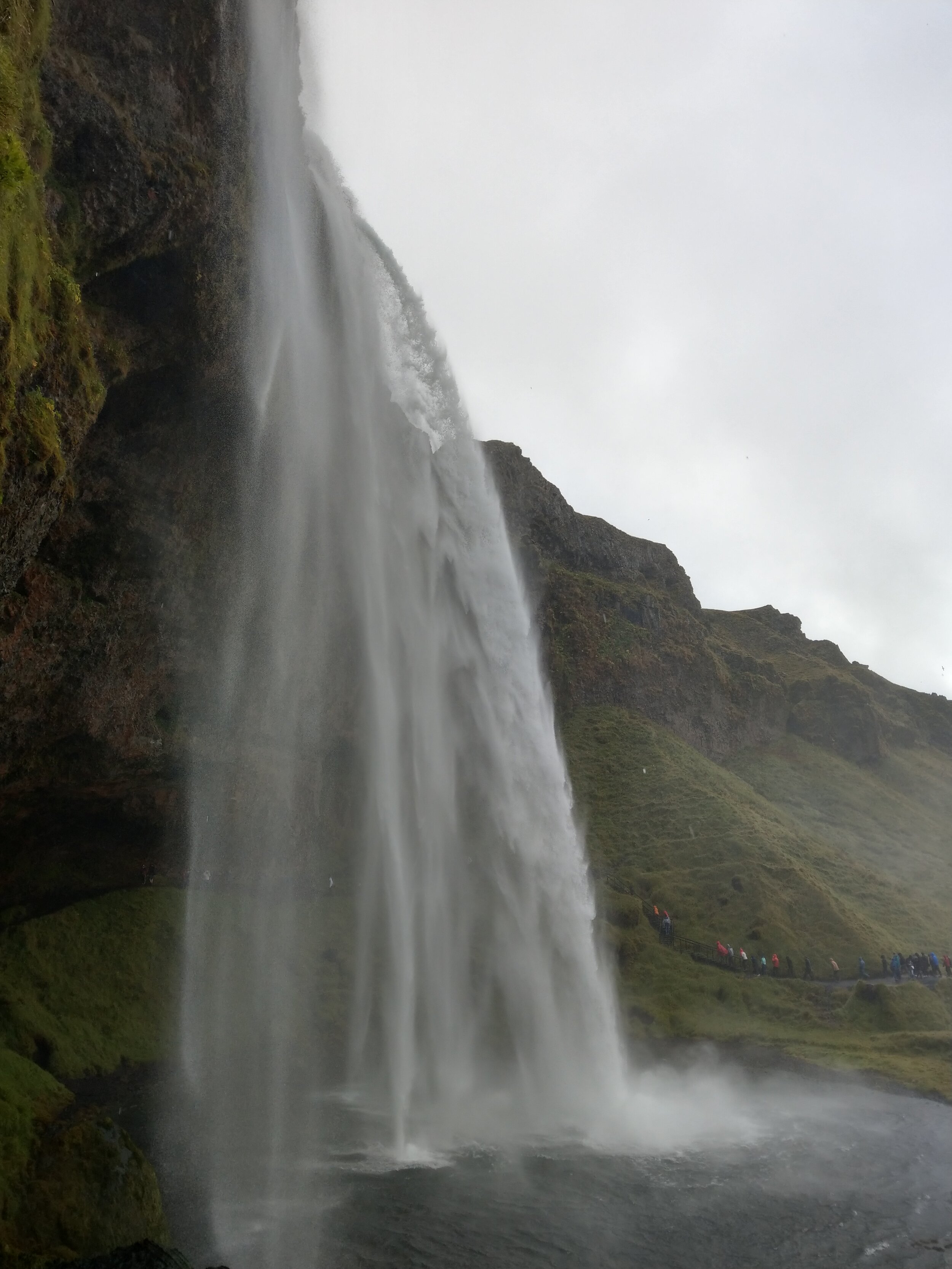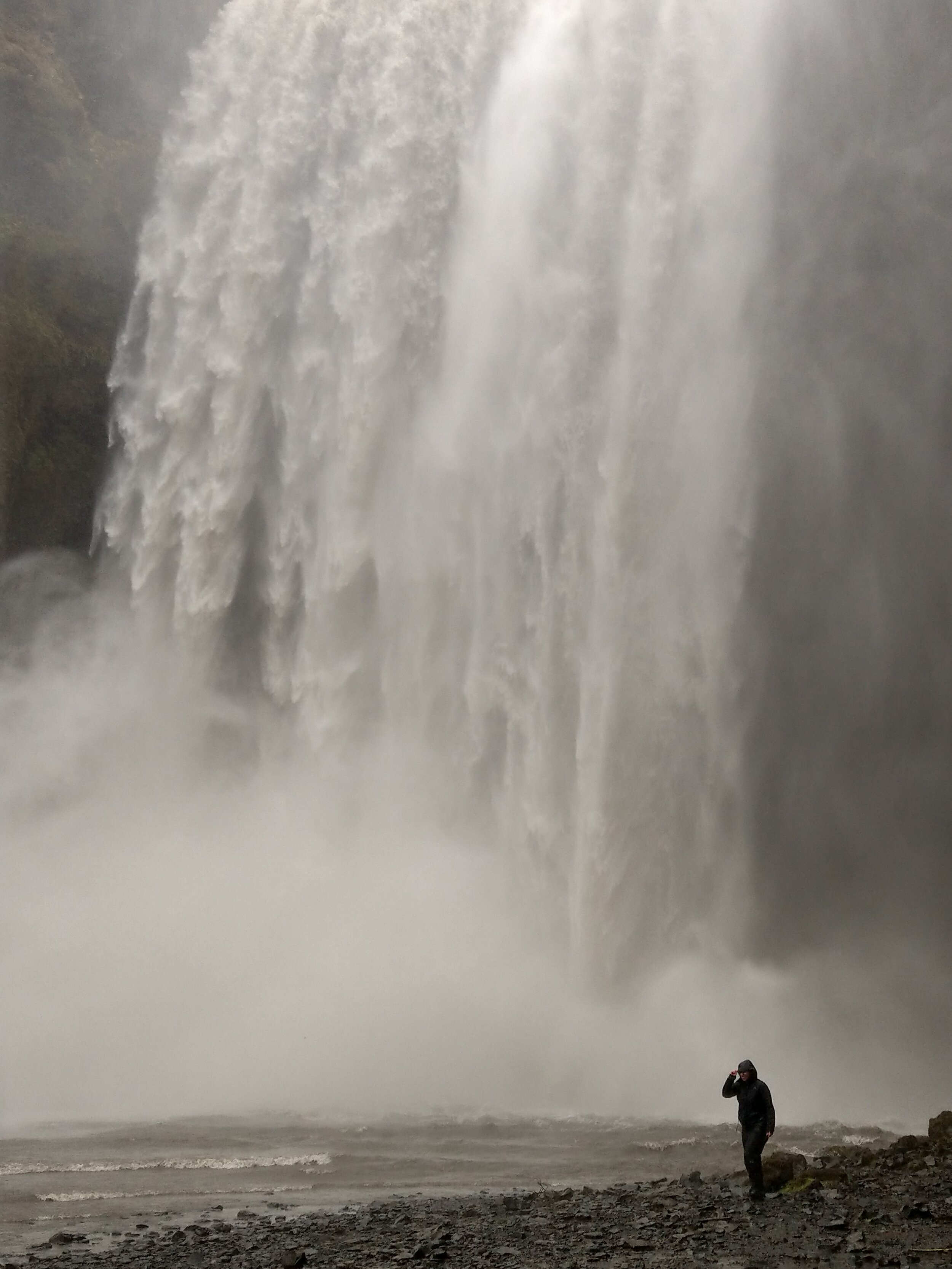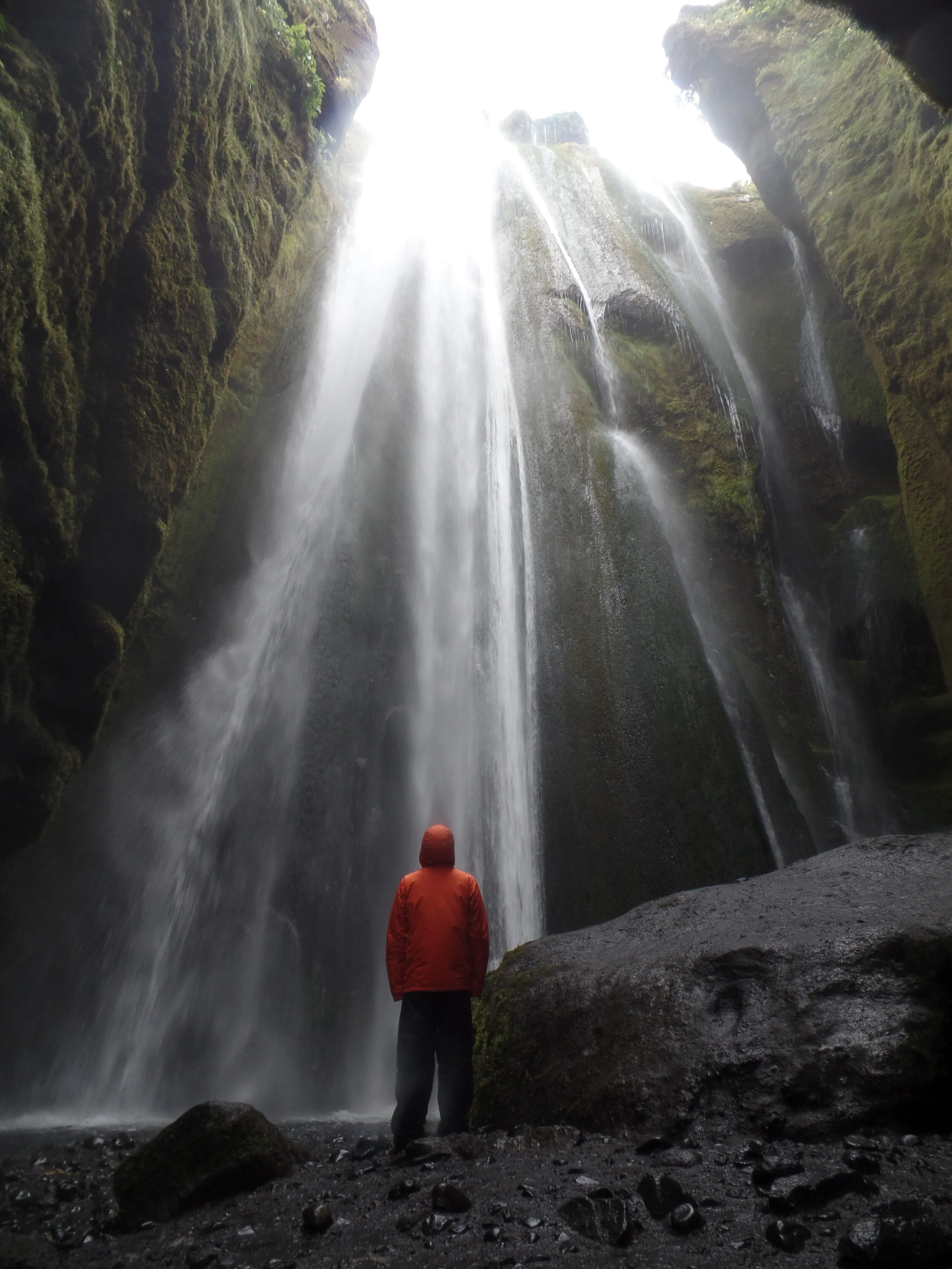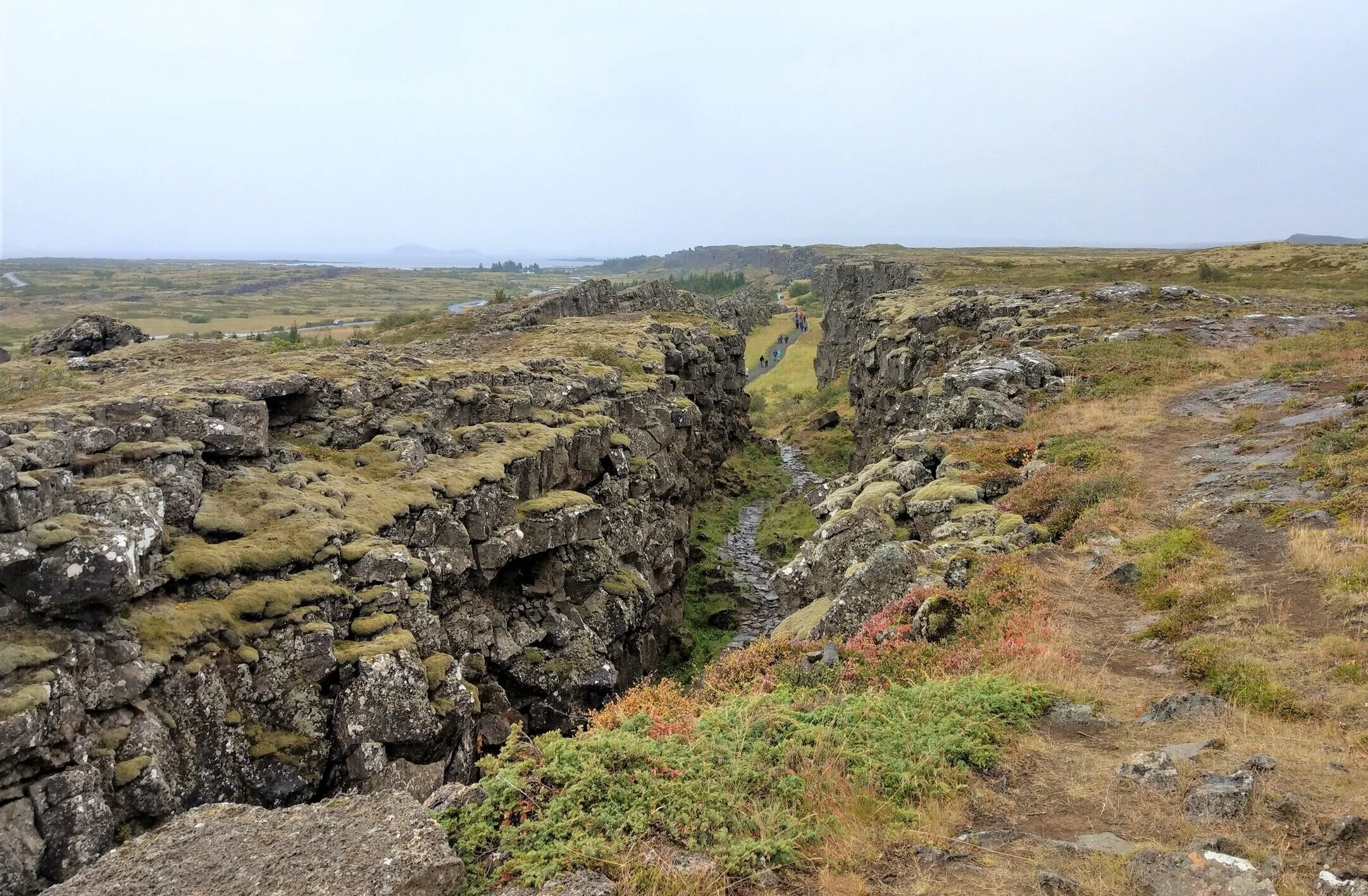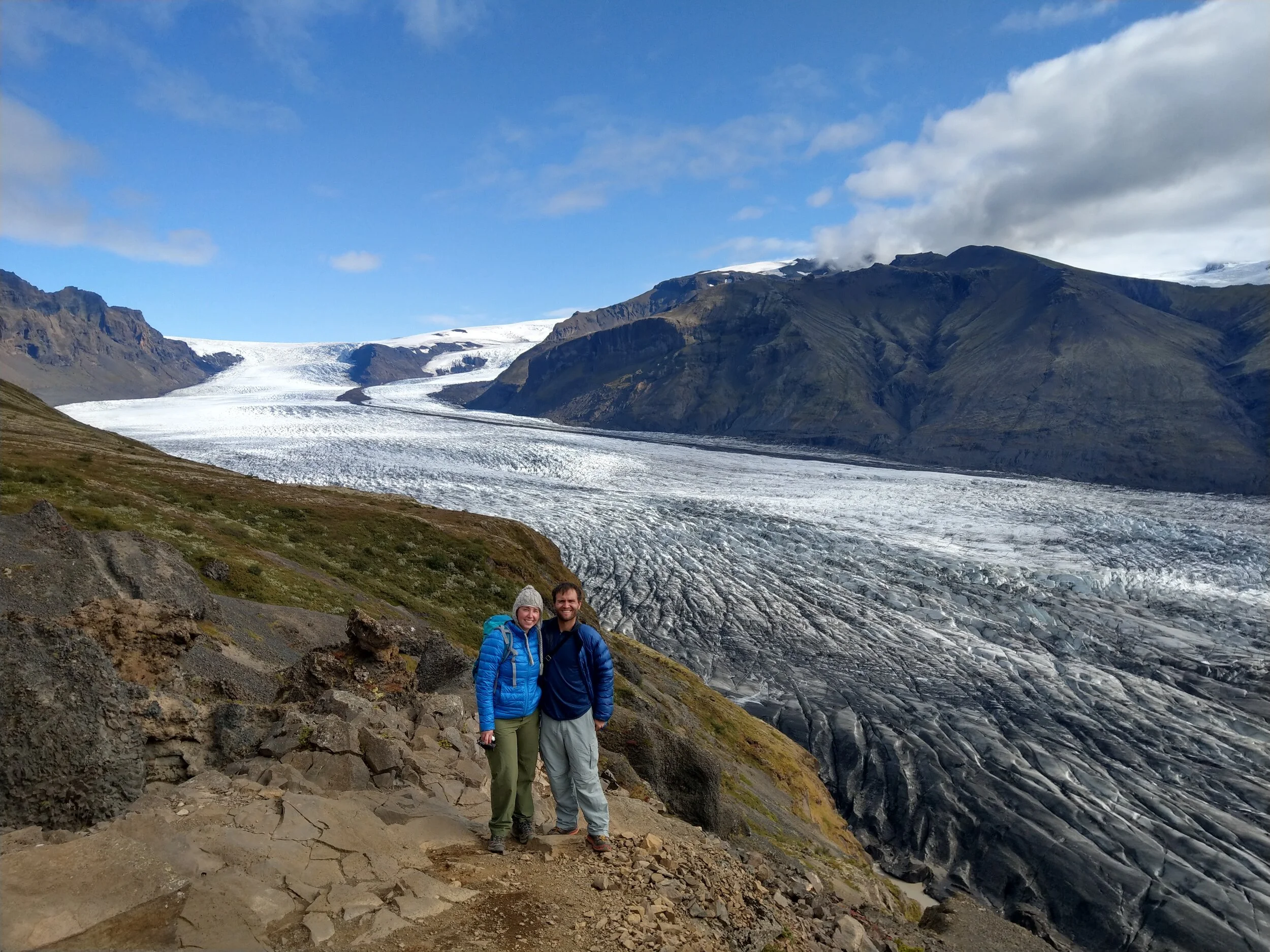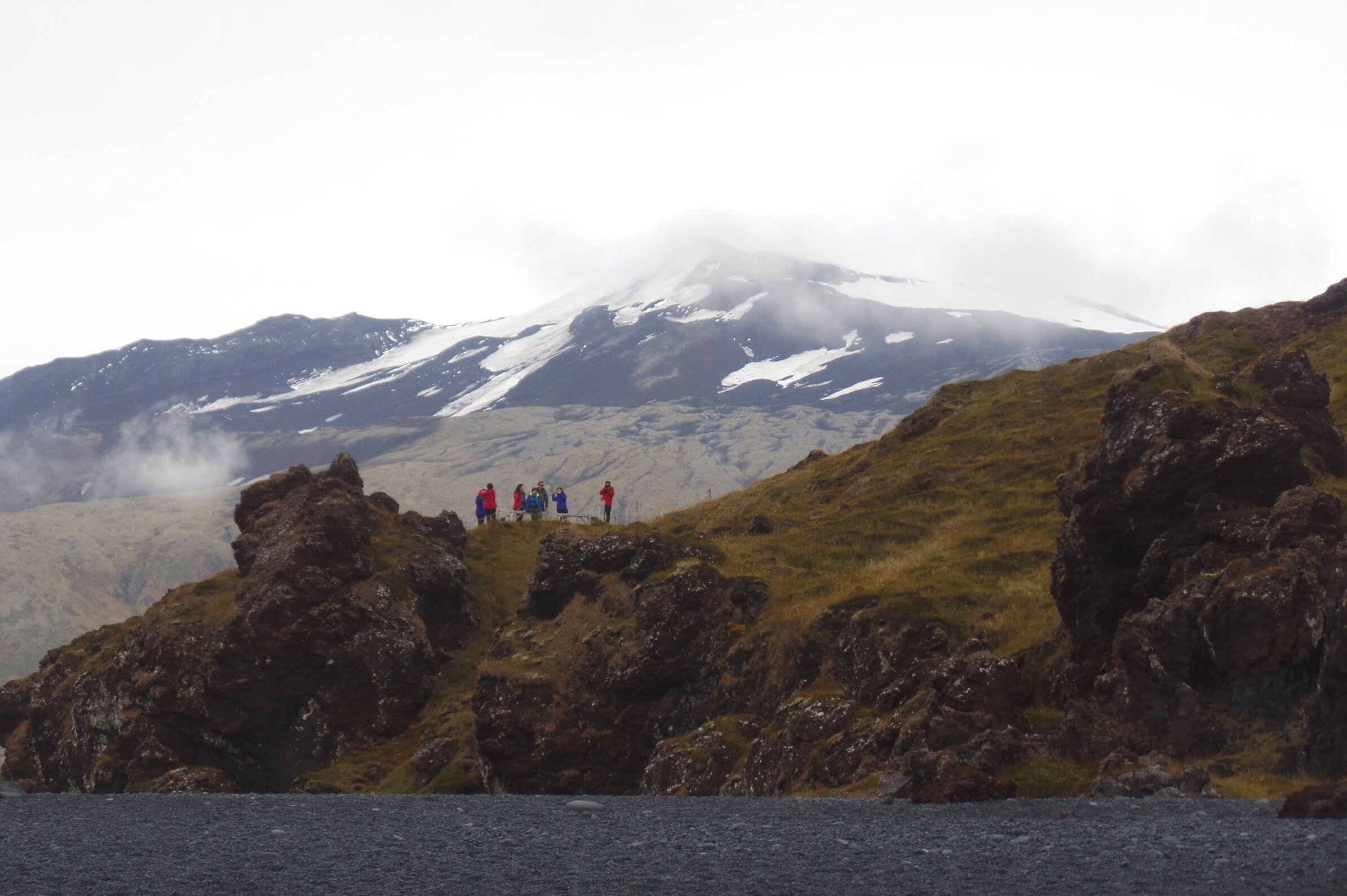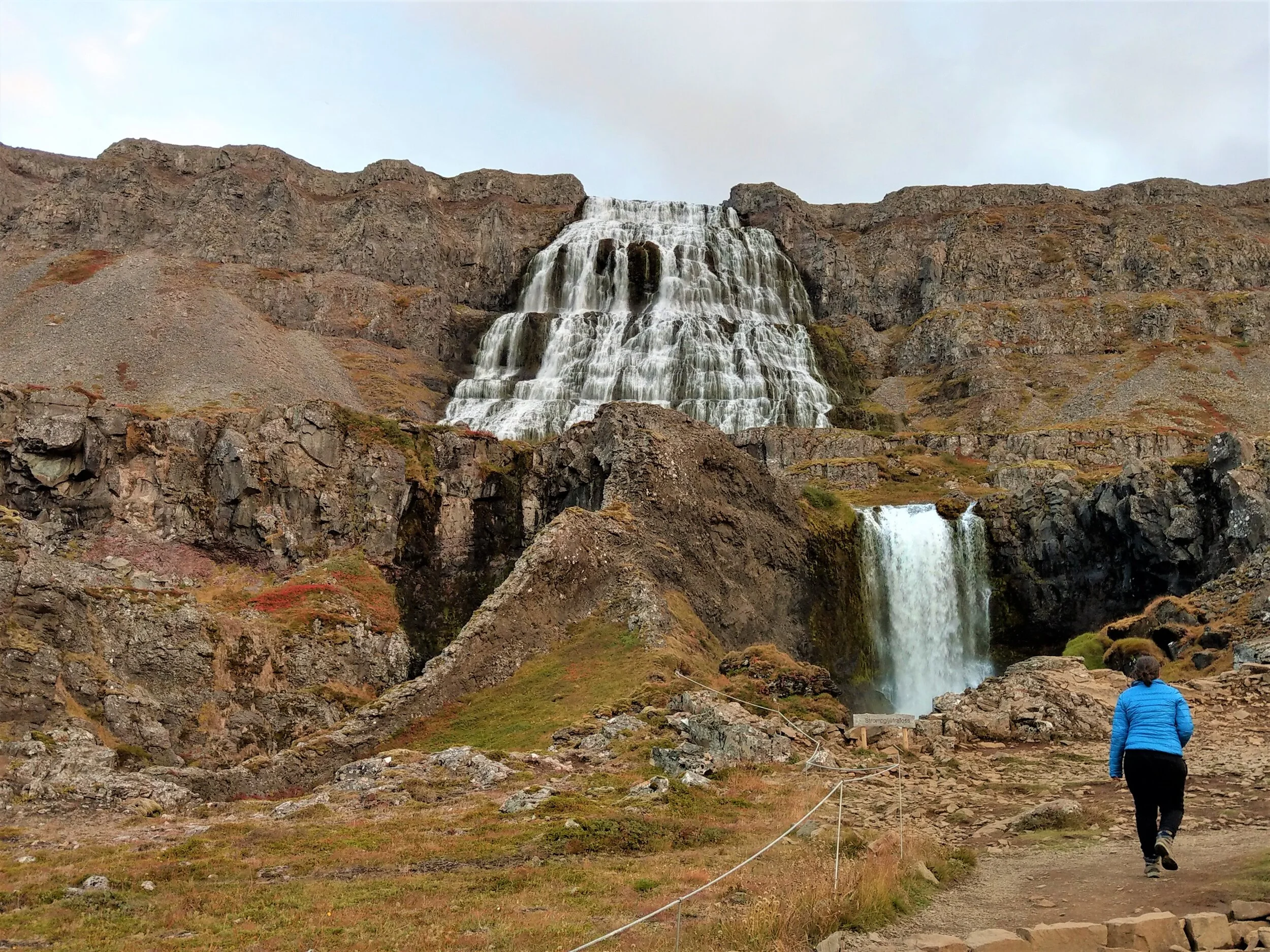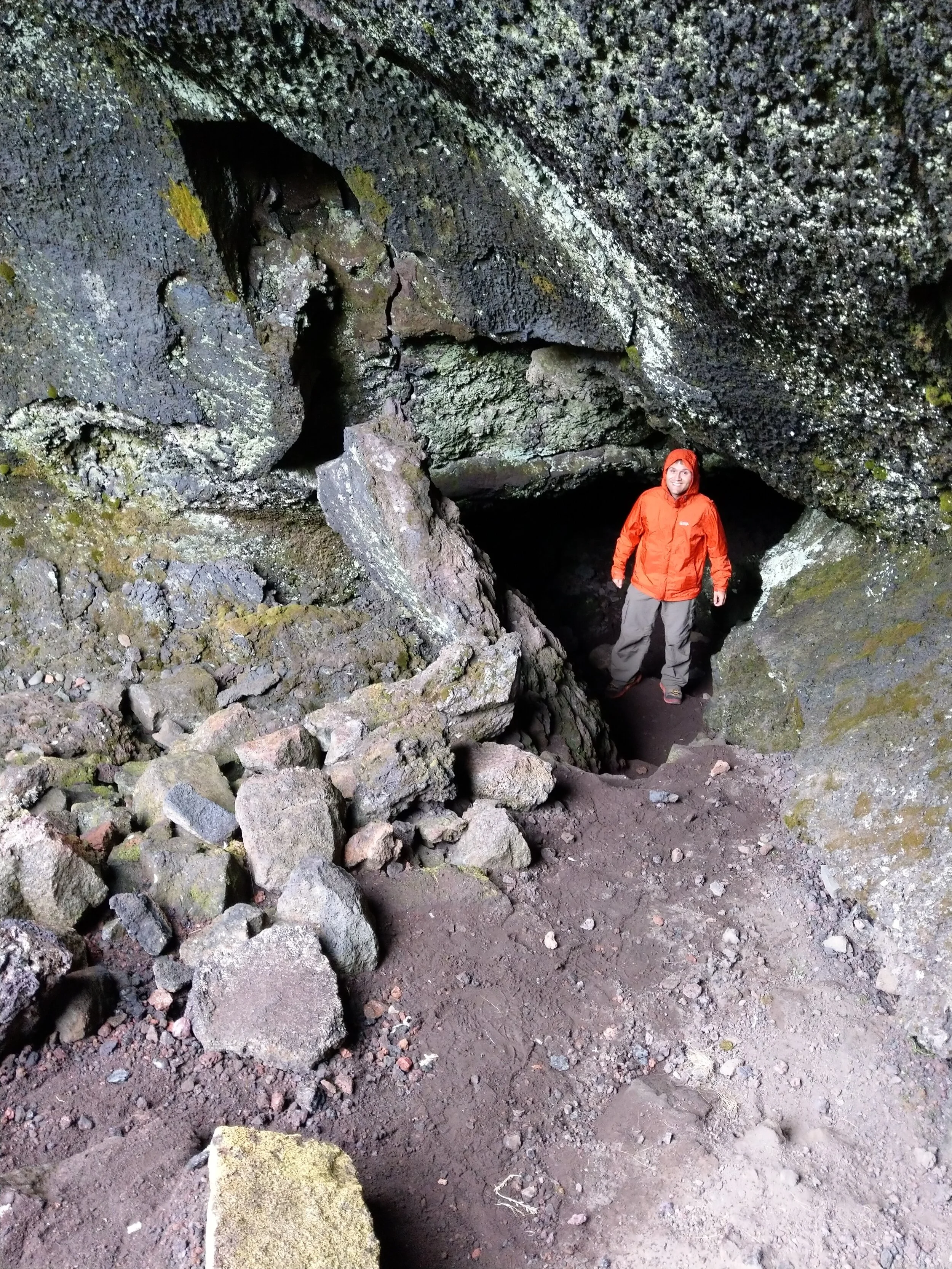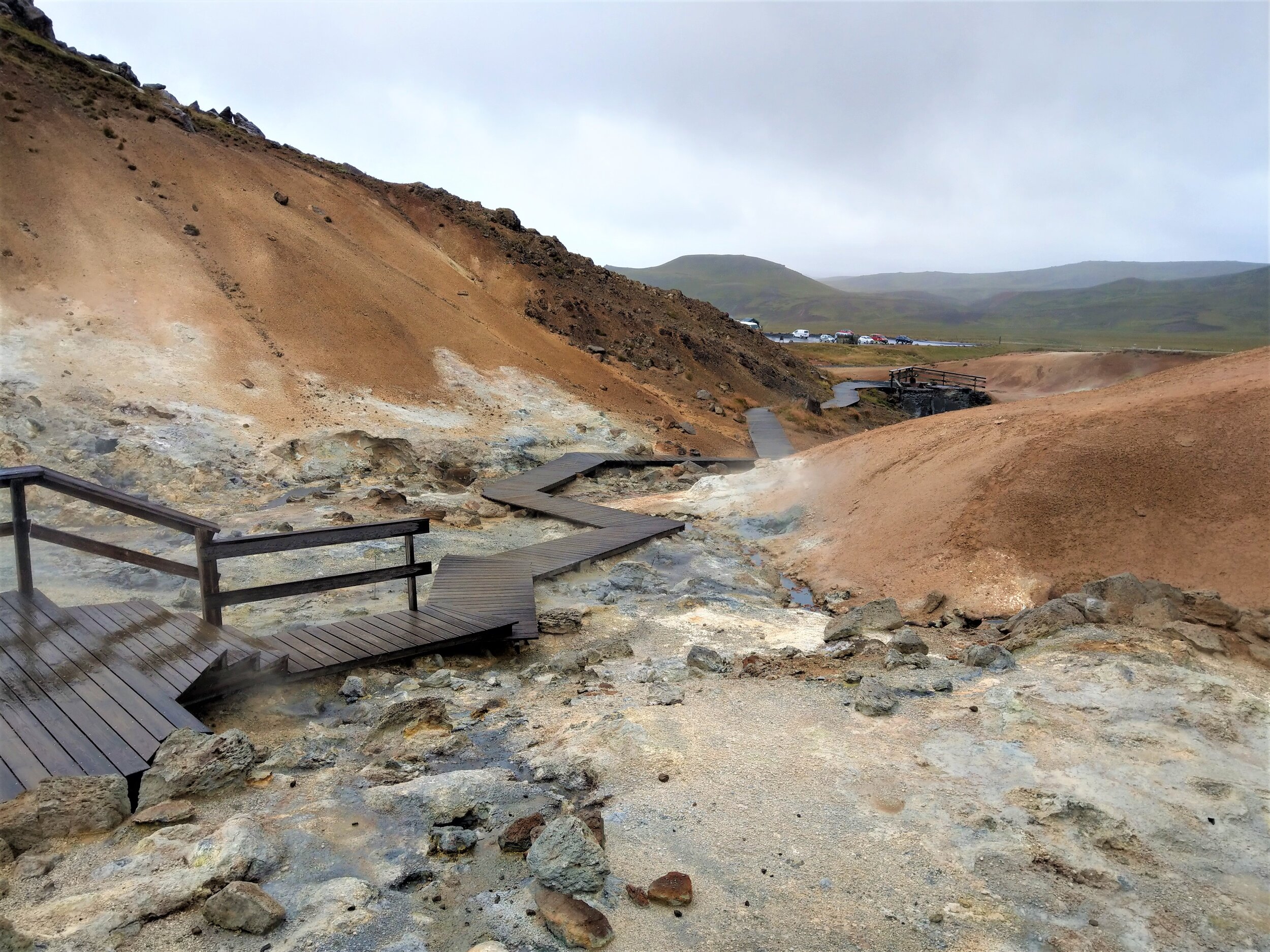Best Things to Do in Iceland: 18 Adventurous Activities in the Land of Fire and Ice
For being such a small country, Iceland packs a big punch when it comes to adventure, epic sights, and natural beauty.
Its diverse landscape means that Iceland has tons of things to see and do. I mean, where else in the world can you kayak among icebergs and walk through an ancient lava field all in one day?!
We spent two weeks travelling all around Iceland and still can’t wait to get back and check more off our list. You can easily spend months here and still not cover it all!
Chances are you’re more like us, and have a limited window of time to explore this incredible country. To help you out, we’ve made this list of what we would consider the best things to do in Iceland. You sure won’t be able to cover it all in one go, especially because some of these things can only be done at specific times of the year, but hopefully it will give you an idea of all the awesome things you can do in this country and help you narrow down your list of must-dos for your own visit to Iceland!
Ok, let’s get to it and spark your wanderlust!
Want to save this post for later? Pin it and come back to it whenever you’d like!
18 Best Things to Do in Iceland
1. Drive the Ring Road
One of the best and most popular things to do in Iceland without a doubt is to drive the ring road.
If you’re not familiar with it, the ring road is an 828-mile road that circles the entire perimeter of Iceland, showcasing a lot of Iceland’s best landscapes and natural wonders.
On a trip along the ring road, you can expect to:
Frolick among moss-covered lava fields
Gawk at beautifully lush green canyons
Gaze upon giant glaciers
Waterfall hunt to your heart’s content
Walk along black sand beaches
Experience geysers up close and personal
Weave in and out of coastal fjords
Phew, that was a lot! And just a sampling of what you can do on a journey around the ring road.
Here are just a few highlights of some of the best places you can visit along Iceland’s ring road:
Seljalandsfoss
This famous waterfall is popular among tourists for its beauty and the fact that you can walk right behind it for a unique perspective. This is a must-see on any ring road itinerary!
Reynisjafara Beach
This is Iceland’s famous black sand beach, known for its moody seas and towering basalt columns.
Jokulsarlon Lagoon and Diamond Beach
Iceland’s most famous lagoon, Jokulsarlon is a gorgeous pit stop along the ring road where you can see small icebergs on their journey out to the Atlantic Ocean. Just across the way, you can walk along a beach where small pieces of ice wash ashore a black sand beach, giving the impression of diamonds sparkling along the shore. Keep your eyes out for some playful seals, too!
Lake Myvatn
Myvatn is a giant volcanic lake found along the northern coast of Iceland. This area has plenty to see, including the Namaskard Geothermal Area, filled with active steam vents and bubbling mud pits.
This is just a tiny sampling of what’s in store for you on the ring road!
Time needed: People spend anywhere between 5 days and 2 weeks driving the ring road. We would say a comfortable time frame is 7-10 days, which gives you ample time to hit a lot of the highlights without feely too rushed.
Best time to go: The ring road can technically be driven year-round, but the best time to drive it is the summer months between June and September when the roads are clear of snow and ice. Outside of this time frame, the roads can be dangerous or closed off, and it requires a 4x4 and a confident winter driver.
2. Visit the Golden Circle
Just a hop, skip, and jump away from Reykjavik (or about 45 minutes if that’s more your unit of measurement) begins Iceland’s most famous tourist route, the Golden Circle. It’s so popular that it just couldn’t be left off a list of best places in Iceland.
The Golden Circle is about 150 miles comprising three main attractions, Thingvellir National Park, Geysir Hostprings, and Gullfoss, that can easily be visited as a daytrip from Reykjavik. But there are a few other places along the way worthy of a stop.
Time needed: In theory, it takes just under 4 hours to drive the entire loop starting and ending in Reykjavik. But we suggest dedicating the entire day for the Golden Circle, because you’ll be making lots of stops and spending lots of time at each!
Best time to go: Like the ring road, the Golden Circle can be driven all year, but the best driving conditions are in the summer months. Outside of this time frame, there are plenty of tours to choose from if you aren’t comfortable driving in winter conditions.
3. Venture into the Highlands
We’ll just say this: if you go to one place in Iceland, make it the highlands.
The highlands are the remote regions in the interior of the country that are home to some of the most incredible landscapes we have ever seen!
The catch? They lie along rough F-roads – bumpy gravel roads that absolutely require a 4x4 vehicle. But the good news? If you don’t want to rent a 4x4, which tend to be more expensive, you can always hop on a day tour into some of these places where you’ll hop on a 4x4 bus from Reykjavik or other southern ring road towns.
Landmannalaugar
While there are few different places around the country where you can access the highlands, we think a visit to Landmannalaugar is one of the best things to do in Iceland.
Part of the Fjallabak Nature Reserve, Landmannalaugar is a truly otherworldy place filled with colorful rhyolite mountains, huge lava fields, and steaming geothermal vents. On the drive there, you’ll pass through expansive black sand deserts punctuated with lime green moss-covered volcanoes that will make you feel like you’re truly in the middle of nowhere (which you kind of are!).
And the best part, you’ll have several hikes to choose from in Landmannalaugar that will take you through this stunning landscape so you can experience it up close and personal.
Time needed: At the very least, you will need a full day for a visit to Landmannalaugar – it’s about a 3 hour one way drive from Reykjavik, and at times can be a bit slow going as part of the drive is along an F-road. We suggest an overnight stay so you have time to get in a few hikes, soak in the People’s Pool, and take your time on the drive in – there are plenty of places to stop along the way!
Best time to go: You can get to Landmannalaugar on your own only when the F-roads are open, which is usually between mid-June to mid-September. This varies year to year based on conditions. If you’re looking to visit Landmannalaugar outside of this window, you can hop on a Super Jeep Tour, however don’t expect to do any hiking, as the trails will be covered with snow and ice, but it’s still sure to be an adventure!
4. Camp!
If you’ve read any of our other Iceland articles, you’re probably sick of hearing this, but we just can’t say it enough! Camping is the absolute best way to explore the country!
Whether you’re tent camping or campervanning, having your home on four wheels gives you the flexibility to make your own schedule on the fly, wake up in some pretty cool places, and connect with Icelandic nature in a way you just can’t do if you’re staying in hotels or guesthouses.
And the best part? Iceland was made for camping. Their infrastructure for camping is great! You can find campgrounds with awesome facilities all over the country and a huge selection of campervans and camping equipment to get you on your way.
5. Hunt for the Northern Lights!
If you’re there at the right time of year, Iceland is a great place to try and catch the Northern Lights! And if you do, we can confidently say that this will be one of the best things you do in Iceland.
We can say from personal experience that seeing the Northern Lights in person is an incredible experience. We actually had no expectations of seeing them when we were in Iceland! We were hopeful, but didn’t think we would actually see them since we weren’t there in the prime Northern Lights season. Plus, it had been raining for a solid week.
But on our very first clear night, I was walking to the dish washing station in our campground, and I saw a light greenish tint appear across the sky. I didn’t think much of it and went to wash the dishes. Just as I was finishing, the campground attendant told me to look up. And then I saw them! I forgot about the dishes and went running back to our campervan in giddy excitement to watch the show. Seeing the green waves dance across the sky was just so neat! I just sat there is awe, and could’ve watched all night. It is still one of our most memorable experiences in Iceland.
Here are some helpful hints if this is on your bucketlist:
The Northern Lights are best seen between October and February because of the longer nighttime hours. During the winter solstice, there’s only about 4 hours of daylight! This means there’s a bigger window of opportunity to catch the lights.
But, if you’re lucky, the Northern Lights can sometimes be seen outside of this window, as early as late August and as late as April. We got super lucky and saw them on the first night of September! In these periods of late fall or early spring, you’ll have to stay up later (like, between midnight and 2 am) for a chance to see them, since that’s when the sky is at its darkest.
The Northern Lights can be somewhat predictable based on things like solar wind and cloud cover. Make sure to check out a few forecasts every day to see what the chances are of seeing the Northern Lights. These forecasts usually predict three days out using a metric called the Kp index. This is a scale of 0-9, with higher numbers meaning a greater chance of seeing the lights.
The Northern Lights forecasts also usually show cloud coverage as well. Clear skies are one of the biggest ingredients needed for a Northern Lights sighting! If Northern Lights are predicted, try to head to an area of very low cloud coverage if you can!
To have your best shot at seeing the Northern Lights well, head to an area away from cities and lights and find a spot with a clear shot of the horizon. There are plenty of places to go in Iceland that fir this description!
The Northern Lights can sometimes have predictable cycles. For example, right now (in 2020), we are in a solar minimum. For the Northern Lights, it means that they show a little less frequently and a little less brightly, but they are more predictable. During a solar minimum, the lights are likely to be seen about every 27 days. So if seeing the Northern Lights is a must on your trip to Iceland, check to see where we are in the 11-year solar cycle and what the Northern Lights pattern is at that point in the cycle. It’s possible to plan your trip when the lights are more likely to display. We didn’t do this on purpose, but our trip just happened to align within that every 27 day period, and we saw them!
If you want to really increase your chances, there are tons of tours that will do all the work for you. It is their mission to make sure you see them! The scout out all the predictions and best locations to give you the best chance of seeing the lights while in Iceland.
Best time to go: October to February is the best time to see the Northern Lights, but like we said, you can get lucky like us and see them outside of this window.
Helpful hint: If you’re like us and want to still be able to hike and venture into the highlands (refer back to number three on this list!), then visiting Iceland in late summer (end of August/early September) is a great option. You can still hike but still have an opportunity, though much smaller, to see the lights. Just be persistent and check those forecasts every day!
6. Go on a Hike
Of course we couldn’t leave our favorite activity off of this list. What better way to explore the epic landscapes of Iceland than on your own two feet?
And Iceland has plenty of options! You can choose between short leisurely strolls along coastlines, moderate hikes to epic glacier viewpoints, or long challenging day hikes through the highlands. Either way, we can guarantee that it will be awesome.
If you’re looking for a really epic hike in Iceland and are up for a challenge, the Fimmvorduhals hike, a point to point hike through the highlands between Thorsmork and Skogar, should definitely be on your radar!
This is an incredible hike that goes through three different landscapes, filled with waterfalls, glacier views, and volcanic landscape. Read our article to learn absolutely everything you need to know about the Fimmvorduhals hike!
Best time to go: Hiking in Iceland is best done in the summer months (mid-June to mid-September) when trails are clear of snow and ice. Access to trailheads in the highlands are only in this limited timeframe due to the closure of F roads.
7. Walk on a Glacier
On our trip to Iceland, we decided to do one paid activity, and we chose glacier hiking. And we’re so glad we did!
There are tons of tours available, ranging from three hours to full day excursions on the ice that may include other activities like ice climbing or lagoon kayaking.
And the best part, no experience is needed to hike on a glacier in Iceland. They’ll provide you with crampons, an ice axe, a helmet, and all the instruction you need to walk across the ice. You’ll typically have about a 20 minute approach to get to the base of the glacier before you suit up and head onto the snow.
There are two main places to choose from for a glacier tour:
Solheimajokull glacier – Located about two hours from Reykjavik, making it most convenient for those not travelling the ring road or venturing too far from the city.
Vatnajokull National Park – Several glacier tongues cascade down from Vatnajokull, Iceland’s largest icecap, meaning there are lots of opportunities for glacier treks in this park. Tour guides will take you to glaciers based on safety and conditions. It’s a bit more of a trek, about 4 hours from Reykjavik, but it’s a great choice for those already travelling down the ring road. Oh, and it’s kind of awesome to be able to walk on a part of Iceland’s largest glacier!
When booking a tour, some things to consider are:
Price – most companies actually offer very similar prices, but if you opt to go first thing in the morning or one of the last tours of the day, you might be able to get a lower price.
Time – Tours range from three hours to full day excursions. We did a three hour tour, which meant about 1.5 hours on the glacier. The longer the time on the ice, the further up the glacier you can go with more opportunity to see crevasses and cool ice formations.
Additional activities – Some full day tours include additional activities such as ice climbing, exploring ice caves, or kayaking in glacial lagoons.
Transportation – Tours usually allow you to choose between meeting at the tour offices right near the glacier, or getting picked up in Reykjavik and dropped back off at the end of the day. If you have your own car, meeting at the offices is the cheaper and less time-consuming way to go. If getting picked up from Reykjavik, keep your entire day open for this activity.
Time needed: This is entirely up to you and which tour you choose! We did the three hour tour in the evening, which meant we had the whole day to explore other places on our own.
Best time to go: This is a year- round activity!
8. Peek Inside an Ice Cave
Visiting an ice cave is one of the coolest things you can do in Iceland (ha, see what I did there?).
But really, they’re pretty neat!
Ice caves form each winter because of the melting and freezing patterns of the glacier. Glacial meltwater carves tunnels through the glacier, leaving behind beautifully patterned, smooth, blue walls of ice.
Time needed: Typically ice cave tours are about 3 hours and bring you to 2 or so caves. You can also get an ice cave tour as part of a larger package with more activities for a full day excursion.
Best time to go: Ice caves are typically found throughout October to March, but it all depends on conditions, so make sure to inquire before you book! We got super lucky on our glacier tour in early September and found a small ice cave that was stable enough to walk through!
9. Visit the Snaefellsnes Peninsula
Making a visit to the Snaefellsnes Peninsula is one of the best things you can do in Iceland if you’re limited on time.
Why? The peninsula is often called “Iceland in Miniature” because of how it gives a great sampling of all of Iceland’s best features in one small loop. Waterfalls, lava fields, a glaciated volcano, moody seas, black sand beaches, and even golden sand beaches…it’s all on this peninsula!
And what’s really awesome is it’s relatively close to Reykjavik. And you can drive the perimeter of the peninsula and see most of the highlights in just a day.
Here are some of our favorite places on the Snaefellsnes Peninsula:
Svortuloft Lighthouse
An historic lighthouse whose bright orange color provides a picturesque contrast to the black lava fields that surround it.
Djupalonssandur Beach
Our favorite spot on the peninsula! This is a popular black sand beach with moody Atlantic seas and some walking paths with great view points.
Ytri Tunga Beach
All we have to say here is, seals! This is a great spot to view them.
Time needed: The Snaefellsnes can easily be seen in a day, but it will be a busy one! A good option is to spend a night on the peninsula if you want to see it all without feeling overly rushed.
Best time to go: The peninsula can be visited year-round. It’s just a matter of your comfort level driving in wintery conditions.
10. Chase waterfalls
If you are a fan of waterfalls (and let’s be honest, who isn’t?!), then Iceland is your paradise and hunting for waterfalls is one of the best things you can do here.
With literally thousands of waterfalls throughout the country, you’ll never be too far from one. In fact, you might see so many you might, dare I say, get tired of them? No way! That’s impossible in Iceland, because each one is so unique and mesmerizing in their own way.
Some of the most popular waterfalls in Iceland are Skogafoss, Seljalandsfoss, and Kirkjufellsfoss. You may not recognize these names, but you’ve probably seen pictures of them if you’ve been doing any research on Iceland.
But there are so many more awesome waterfalls to chase…
Best time to go: This is another year-round activity! In the spring and summer, you can see the waterfalls flowing with full force. The winter brings a whole different kind of beauty, as some of these falls may be frozen or surrounded by snow and ice. It’s all a matter of preference for what you want to see.
11. Visit a National Park
Iceland is home to three National Parks, and each one offers something a little different.
Thingvellir National Park
This park is probably the most popular on the list due to its position along the famous Golden Circle route.
But it’s also a UNESCO World Heritage Site because of its historical and geological importance.
A stroll through the walking paths in Thingvellir will take you through the history of some of Iceland’s earliest days of government. Oh, and while you’re at it, you’ll be walking in between two tectonic plates!
Vatnajokull National Park
Located along the southern ring road, this park is hard to miss if you’re driving the ring road route.
This is a huge park…it basically encompasses Iceland’s largest icecap, which makes up 8% of the country’s landmass! Yea…it’s pretty big. As you drive by, you can see glacier after glacier cascading down from the massive ice cap.
A tiny area in the park known as Skaftafell is where visitor activities are concentrated. Here, you can go on leisurely strolls to glacial lagoons, opt for a more challenging hike to stunning viewpoints, or even hike right on a glacier (see number 6)!
Snaefellsjokull National Park
This park is located at the very tip of the Snaefellsnes Peninsula. Its most striking feature is its namesake, Snaefellsjokull, a giant glaciated volcano famous for its featured role in A Journey to the Center of the Earth.
On a clear day, the views of this volcano are stunning.
Other than admiring the views of this giant, some other activities you can do in the park include:
Visiting a golden sand beach
Hiking the rim of a volcanic crater
Walking on a black sand beach
Touring an ancient lava tube
Check out our post all about the Snaefellsnes Peninsula to learn more (see number 8 on this list)!
Time needed: A visit at any of these parks can last as long as you want! But generally, a few hours at each would be sufficient to see and do the highlights.
12. Journey out to the Westfjords
If you’re after solitude, Icelandic wilderness, and a way to escape the crowds, then venturing out to the Westfjords is probably one of the best things you can do in Iceland.
The Westfjords are a truly remote place, and as such, it is Iceland’s least visited area. It’s a quite a drive to get out there, but so worth it.
Time needed: It takes a long time to get to any point of interest in the Westfjords. From Reykjavik, it’s a 5 to 5 and a half hour drive to get to some of the highlights. Needless to say, this isn’t a day trip. To make your time worth it, we recommend planning at least two full days in the area.
Best time to go: We recommend the summer months. While most roads are driveable with a standard 2x2 car, roads can get rough and slick as you maneuver around and go up and over fjords, and in the winter, many roads close down and aren’t serviced.
13. Peek on some puffins, or watch for whales
If you come at the right time of year, Iceland has great opportunities for spotting some unique wildlife.
Puffins are a great one to keep your eye out for, because Iceland has a lot of them. In fact, it has the largest Atlantic puffin population in the world! But you’ll have to be in Iceland between mid-April to mid-August if you want to spot them as they come back to the mainland to breed and nest.
Check out this great article to learn about all the best spots for finding puffins and how to keep both yourself and the puffins safe!
Whale watching is another popular activity in Iceland in the summer months. Humpback and Minke whales are especially common, and tours leave from Reykjavik, and the West and North coasts.
14. Go scuba diving
Scuba diving in Iceland? Is that even a thing?
Yes, it is! In fact, Iceland has a world-famous dive site, known as Silfra. Located in Thingvellir National park along the Golden Circle, Silfra is known for its super good visibility through the surrounding glacial water, and for the fact that you’re diving in between two continental plates! Sign me up, right?
Unfortunately, we didn’t get to check this one off our list, but we had to include it on our list of best things in Iceland because, well, how freaking cool does this sound?
There are plenty of tour operators that will provide with the gear you need to scuba or snorkel through the rift. (Just a heads up, if you plan to scuba, you will need a dry suit certification.) It’s pricey, but a once in a lifetime thing.
Time needed: Usually tours are half day excursions.
Best time to go: This is year- round…that Icelandic glacier water is cold no matter what time of year!
15. Kayak in a glacial lagoon
What’s better than standing at the edge of a glacial lagoon watching icebergs calve and float out to sea? Kayaking through it, of course!
A kayaking excursion in Iceland will make for some epic pictures and memories and get you as close as you can get to those massive chunks of ice!
Two popular spots for this activity are either in the Jokulsarlon or the Fjallsarlon glacial lagoons and plenty of tour operators provide all the gear you’ll need. Some examples are here and here, but a quick google search will allow to compare different tour guides.
Time needed: Just an hour a half is needed for this adventure, unless this is part of a larger day tour that you’ve booked.
Best time to go: May-September
16. Visit the Reykjanes Peninsula
This is an easy one to check off your list…because if you flew into Iceland, you’ve already been here!
But often, people just go to and from the airport along this small peninsula in the south west corner of Iceland without exploring much else (well, other than the Blue Lagoon, because that’s here, too).
If you want to venture off the beaten path a little bit, exploring the Reykjanes Peninsula is a good option. This area of Iceland is very volcanic, so you’ll discover lots of lava fields and geothermal activity here.
One of our favorite spots was Krysuvik, a geothermal area with fewer crowds than its more popular counterparts along the Golden Circle and ring road.
Check out this article out for a few more ideas.
Time needed: You can spend as long as you’d like exploring the peninsula, but a half day is sufficient to see a few of the highlights.
17. Soak in a hotspring
Because Iceland is so geothermally active, you better believe there are quite a few options for soaking in a hotspring.
Natural hotsprings can be found all over the country… some are heavily commercialized and some are hidden gems that only the locals frequent.
In many towns along the ring road, there are man made geothermal swimming pools that many locals and tourists alike go to for relaxing and soaking in the warm waters. Check out this awesome site to find some of the best hotsprings of every type.
18. Walk on black sand, red sand and golden sand beaches
We all know Iceland has its famous black sand beaches, but did you know there are golden and red sand beaches, too? Who knew beaches could be so colorful?
For some black sand beaches, check out:
Reynisjfara – Iceland’s most famous black sand beach located along the southern ring road
Djupalonssandur Beach – Our favorite spot on the Snaefellsnes Peninsula for its moody Atlantic seas
For golden sand beaches, head to the Snaefellsnes Peninsula and check out:
Skardsvik Beach – A golden sand beach set amongst dark lava fields and cool rock formations
Ytri Tunga Beach – We loved this beach for the seals! It’s pretty common to spot them here.
Iceland’s red sand beach can be found in the Westfjords:
Raudasandur – A vast red sand beach that takes some effort to get to but is so worth it! Refer back to #12 on this list for more information on how to get to this beach.
And that’s a wrap! We tried our best to come up with what we thought are the absolute best things to do in Iceland based on our experience in this incredible country. While we know you can’t do them all (at least all in one go!) we hope this gives you some ideas of what you would like to include on your own Iceland itinerary! Or give you some inspiration to head back a second (or third, or fourth, or….) time.
Let us know in the comments below if there is anything you’d add!
